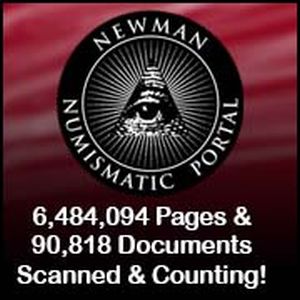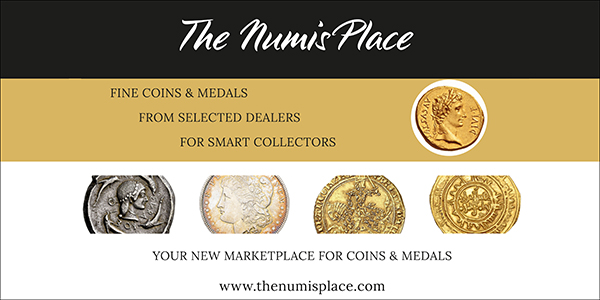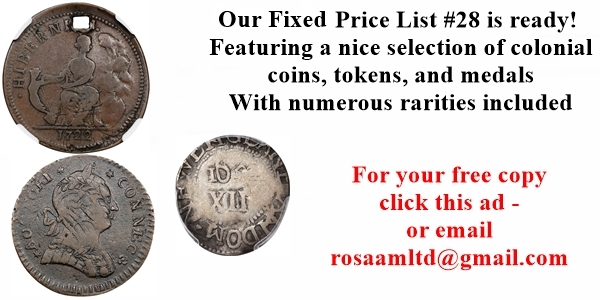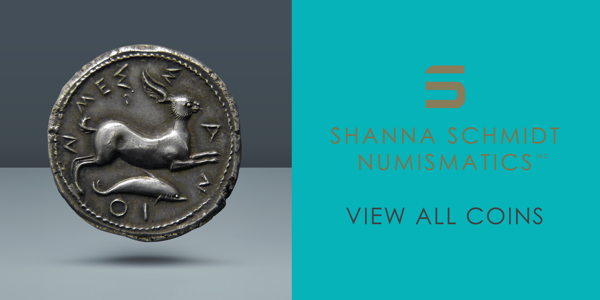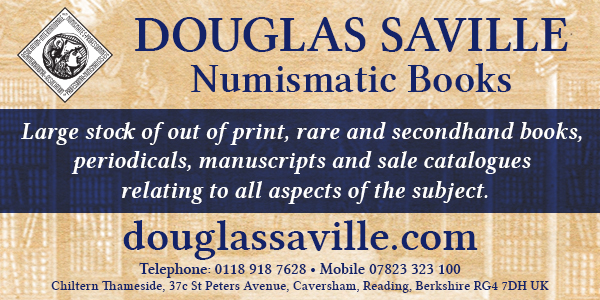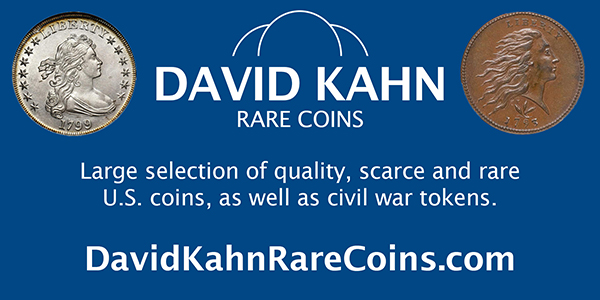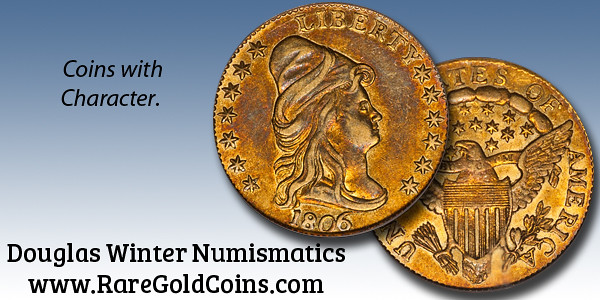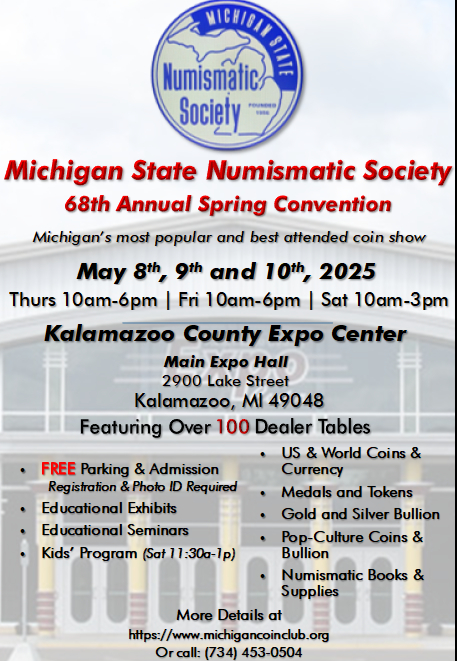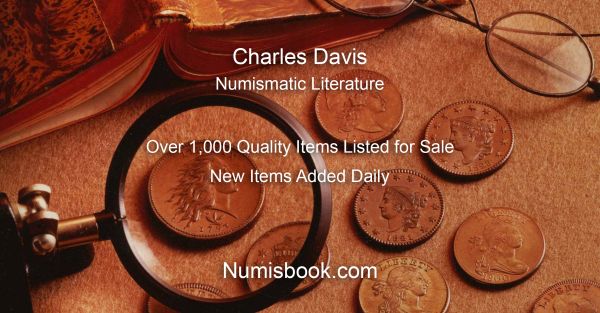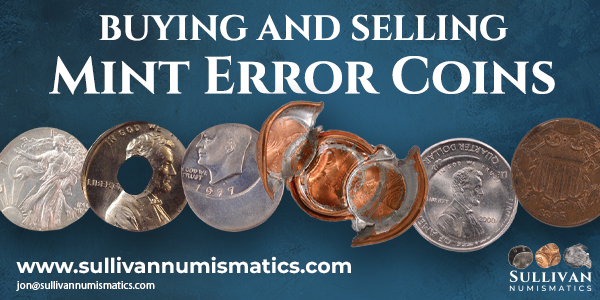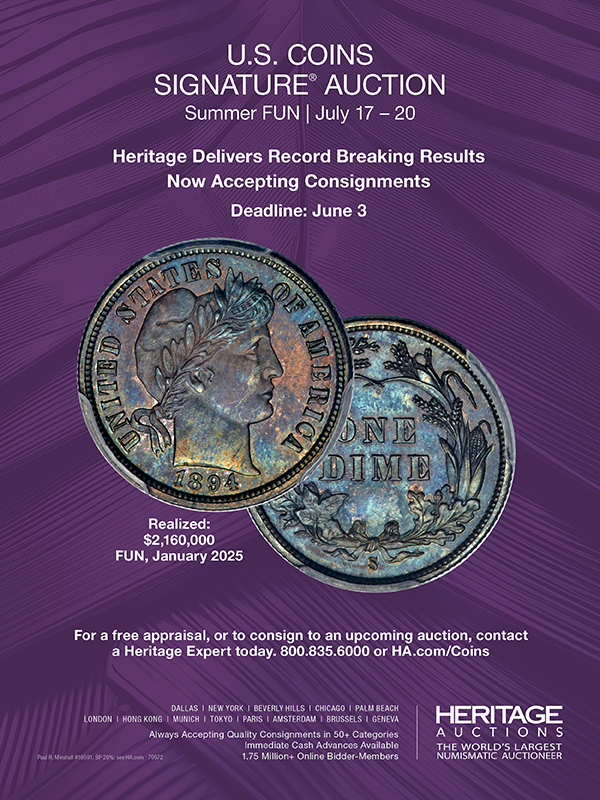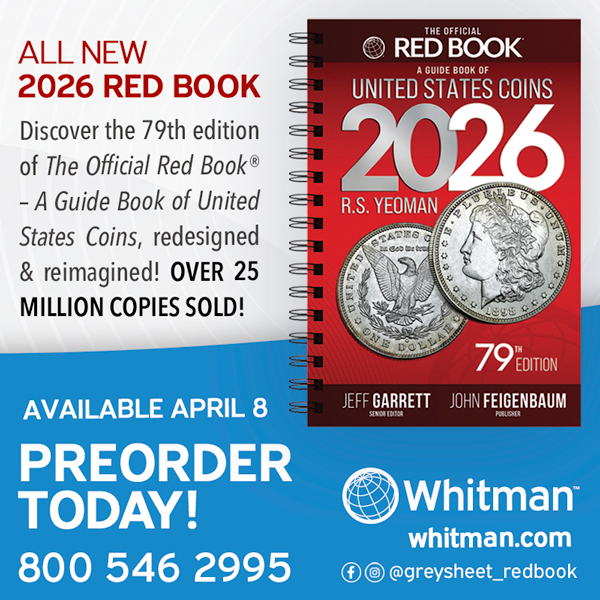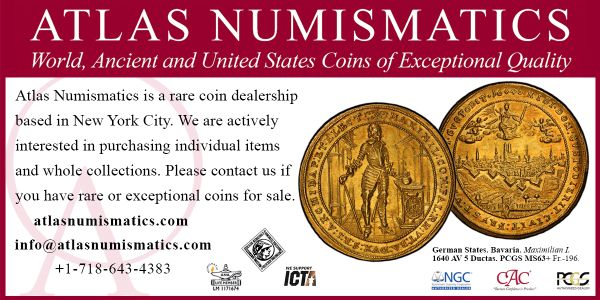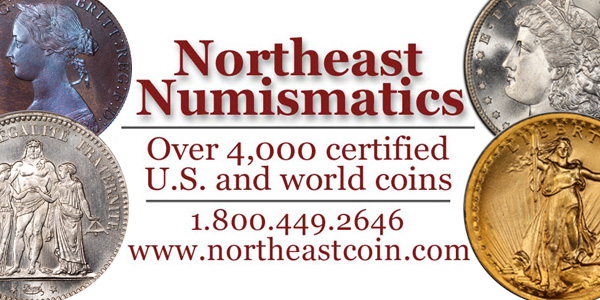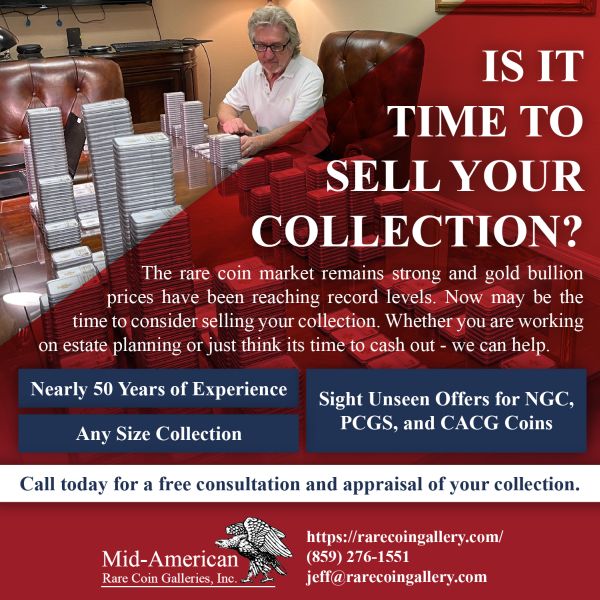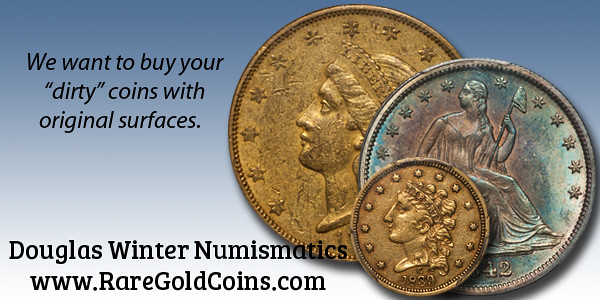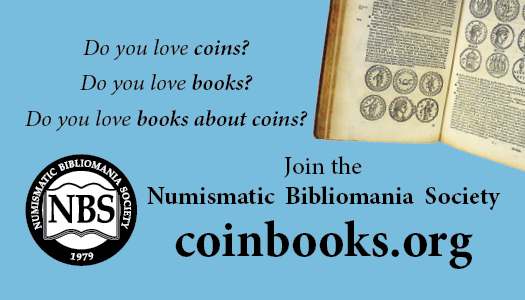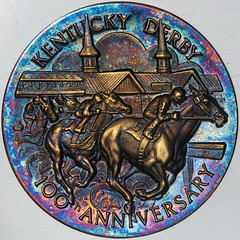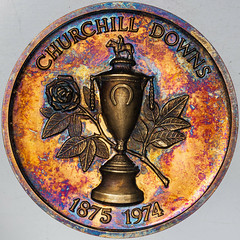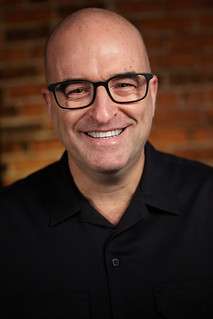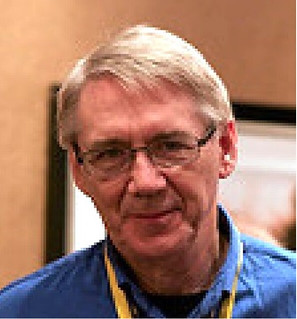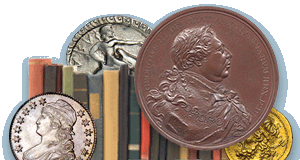
Visit our NBS Sponsors
About UsThe Numismatic Bibliomania Society is a non-profit association devoted to the study and enjoyment of numismatic literature. For more information please see our web site at coinbooks.org SubscriptionsThose wishing to become new E-Sylum subscribers (or wishing to Unsubscribe) can go to the following web page link MembershipThere is a membership application available on the web site Membership Application To join, print the application and return it with your check to the address printed on the application. Print/Digital membership is $40 to addresses in the U.S., and $60 elsewhere. A digital-only membership is available for $25. For those without web access, write to: Jeff Dickerson, Treasurer AsylumFor Asylum mailing address changes and other membership questions, contact Jeff at this email address: treasurer@coinbooks.org SubmissionsTo submit items for publication in The E-Sylum, write to the Editor at this address: whomren@gmail.com BUY THE BOOK BEFORE THE COINSale Calendar
|
- WAYNE'S WORDS: THE E-SYLUM MAY 4, 2025
- LANG NUMISMATIC LITERATURE AUCTION 6
- NEW BOOK: WILLIAM WYON
- NEW BOOK: THE ART OF MAKING MEDALS
- ANS LIBRARY CATALOG ADDS CORRESPONDENCE
- VIDEO: ALASKA-YUKON-PACIFIC EXPOSITION
- ARTHUR HEWES SARGENT (1856-1932)
- NOTES FROM E-SYLUM READERS: MAY 4, 2025
- ROSA AMERICANA 1733 TWOPENCE IMAGES AND COPIES
- LESTER, WALTER, JACKIE AND LIZ
- VOCABULARY TERM: RESIDUAL TONING
- CLAUDE C. BIRDSELL (1879-1963)
- TREASURE TALK WITH BOB EVANS, EPISODE 4.1
- HALPERIN RECEIVES PNG'S HIGHEST HONOR
- ROBERTS RECEIVES PNG'S LIFETIME ACHIEVEMENT AWARD
- MORE 2025 PNG AWARD WINNERS
- STACK'S BOWERS MAY 2025 WORLD PAPER MONEY
- STEPHEN ALBUM RARE COINS AUCTION 52
- NOONAN OFFERS RARE GOLD BERKSHIRE TOKEN
- SINCONA OFFERS QUEEN ANNE MEDALS
- 6888 POSTAL BATTALION CONGRESSIONAL GOLD MEDAL
- NEW CRACKDOWN OVER EURO NOTES
- MONEY EXCHANGES REJECTING CHOPMARKED BILLS
- THE 2025 GOLD MARKET
- GOLD TREASURE FOUND IN THE CZECH REPUBLIC
- LOOSE CHANGE: MAY 4, 2025
- DIMES SPILLED ON TEXAS HIGHWAY
- ABOUT THIS ISSUE: MAY 4, 2025
Content presented in The E-Sylum is not necessarily researched or independently fact-checked, and views expressed do not necessarily represent those of the Numismatic Bibliomania Society.
WAYNE'S WORDS: THE E-SYLUM MAY 4, 2025
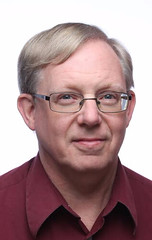 New subscribers this week include:
Jacob Hammers.
Welcome aboard! We now have 7,248 subscribers.
New subscribers this week include:
Jacob Hammers.
Welcome aboard! We now have 7,248 subscribers.
Thank you for reading The E-Sylum. If you enjoy it, please send me the email addresses of friends you think may enjoy it as well and I'll send them a subscription. Contact me at whomren@gmail.com anytime regarding your subscription, or questions, comments or suggestions about our content.
Happy Star Wars Day - May the Fourth be with you. This week we open with a numismatic literature auction, two new books, updates from ANS and the Newman Numismatic Portal, and more.
Other topics this week include William Wyon, Arthur Sargent, the Alaska-Yukon Exposition, the 1733 Rosa Americana Twopence, residual toning, the 2025 PNG award winners, auction previews, Queen Anne medals, the 6888 Postal Battalion Congressional Gold medal, Euro note crackdowns, chopmarked banknotes, more gold, and a whole truckload of dimes.
To learn more about the Collection of Greek Coins Formed by Sir Hermann Weber, the art of medal-making, the stolen duPont 1838-O Half Dollar, Nicholson's Half Dime tokens, Legacy, the suit against an "Unidentified, Wrecked and Abandoned Sailing Vessel", Jim Halperin, Greg Roberts,the 2025 gold market, and Walter Breen's encounter with Jackie Kennedy, read on. Have a great week, everyone!
Wayne Homren
Editor, The E-Sylum
LANG NUMISMATIC LITERATURE AUCTION 6
The sixth numismatic literature auction from Numismatic Antiquarian Bookshop Lang closes May 15, 2025. Here's the announcement. -Editor
Our 6th auction will take place on 15th of May, 2025 at 5 p.m. (CEST).
You can look forward to a varied selection of numismatic literature. Particularly noteworthy is a part of the library of a passionate book lover, which is characterized by magnificent bindings and rare books and catalogs that are almost impossible to find in the original. We are delighted to be able to offer this valuable collection in our auction.
In addition, an extensive collection of antique numismatics will be auctioned, comprising both rare works and standard literature. As usual, numerous bibliophile works, periodicals and auction catalogs can be found in the various sections. The auction catalogs range from entire series to special collections - a paradise for collectors and enthusiasts.
The auction comprises a total of 991 lots waiting for a new owner.
Some of the highlights:
Lot 171: Forrer, L. Descriptive Catalogue of the Collection of Greek Coins Formed by Sir Hermann Weber M.D. 1823-1918. London 1922-1929. 3 parts in 7 volumes, complete. 4 text volumes and 3 plate volumes. Frontispiece, XVI, 377 p.; 579 p.; 473 p.; pp. 474 - 996; 318 tfn. 7 vols. Full cloth, slight signs of wear, one volume of plates somewhat damaged, partially uncut.
With bookplates "Wayte Raymond" and "Herbert Kreindler" in volume 1. Rarely offered.
Lot 20: Gaetani, P.A. Museum Mazzuchellianum, seu Numismata Virorum doctrina praestantium, quae apud Jo. Mariam Comitem Mazzuchellum Brixiae servantur. Venice 1761-1763. 2 parts, complete. XXIII, 455 p., 100 tfn. ; XXVI, 430 p., tfn. 101 - 208 tfn. 2 vols. Contemporary full vellum, corners bumped, some worming.
 Lot 408: Bahrfeldt, E. Das Münzwesen der Mark Brandenburg von den ältesten Zeiten bis Kurfürst Friedrich III. Berlin 1889 + 1895 and Halle 1913. Vol. 1: Das Münzwesen der Mark Brandenburg von den ältesten Zeiten bis zum Anfange der Regierung der Hohenzollern. IX, 314 p., 1 stammtf., 1 map, 28 tfn. Volume 2: The coinage of the Margraviate of Brandenburg under the Hohenzollerns up to the Great Elector, from 1415 to 1640. Volume II: Under the Hohenzollerns up to the Great Elector. VI, 571 p., 25 tfn. Vol. 3: The Coinage of the Mark Brandenburg under Frederick William, the Great Elector and Elector Frederick III, 1640 - 1701. IX, 174 p., 27 Tfn. 3 volumes. Uniform half leather, partly rubbed and foxed, corners bumped.
Lot 408: Bahrfeldt, E. Das Münzwesen der Mark Brandenburg von den ältesten Zeiten bis Kurfürst Friedrich III. Berlin 1889 + 1895 and Halle 1913. Vol. 1: Das Münzwesen der Mark Brandenburg von den ältesten Zeiten bis zum Anfange der Regierung der Hohenzollern. IX, 314 p., 1 stammtf., 1 map, 28 tfn. Volume 2: The coinage of the Margraviate of Brandenburg under the Hohenzollerns up to the Great Elector, from 1415 to 1640. Volume II: Under the Hohenzollerns up to the Great Elector. VI, 571 p., 25 tfn. Vol. 3: The Coinage of the Mark Brandenburg under Frederick William, the Great Elector and Elector Frederick III, 1640 - 1701. IX, 174 p., 27 Tfn. 3 volumes. Uniform half leather, partly rubbed and foxed, corners bumped.
With bookplate "Hermann Wintz".
The auction will be held online on the Auex platform, so you can participate conveniently from anywhere in the world. Further information on registration and the auction conditions can be found on our website. We recommend that you register early to ensure that you can take part in this unique event.
You will also have the opportunity to place pre-bids via the following platforms:
- Sixbid
- Biddr
- Numisbids
We look forward to welcoming you on May 15, 2025 and are convinced that this auction will be an unforgettable experience for every collector in the field of numismatics and bibliophilia. Make a note of the date and be there!
For more information, or to bid, see:
https://auktionen.numismatisches-antiquariat.de/de-de/auctions/lots?cat_id=6
NEW BOOK: WILLIAM WYON
It hasn't been officially launched yet, but be on the lookout at the end of this month for the new book by Mark Jones on engraver William Wyon, published by SPINK. Here's the Amazon preview. -Editor
 Chief Engraver at the Royal Mint and the leading medallist of his time, William Wyon RA (1795-1851) produced some of the best known and most widely distributed images ever made. His portraits of the young Queen Victoria on the coinage, used throughout the British empire, and the more regal head used for the first postage stamps, the penny red and two penny blue, were reproduced in their millions and distributed all around the globe. A highly regarded modeller in low relief, known and admired for the classical purity of his compositions and the accomplishment of their execution, Wyon was celebrated as a British artist who more than rivalled his continental competitors, favored by royalty and by many of the most prominent and influential figures of his time. The book aims to understand how and why Wyon's work was commissioned and how it was received, using institutional archives, contemporary correspondence, and reminiscence, and the popular press, to create a rounded picture of the life, work, networks, influence, and impact of an artist who was also an entrepreneur on his own account and a public servant at the heart of the establishment.
Chief Engraver at the Royal Mint and the leading medallist of his time, William Wyon RA (1795-1851) produced some of the best known and most widely distributed images ever made. His portraits of the young Queen Victoria on the coinage, used throughout the British empire, and the more regal head used for the first postage stamps, the penny red and two penny blue, were reproduced in their millions and distributed all around the globe. A highly regarded modeller in low relief, known and admired for the classical purity of his compositions and the accomplishment of their execution, Wyon was celebrated as a British artist who more than rivalled his continental competitors, favored by royalty and by many of the most prominent and influential figures of his time. The book aims to understand how and why Wyon's work was commissioned and how it was received, using institutional archives, contemporary correspondence, and reminiscence, and the popular press, to create a rounded picture of the life, work, networks, influence, and impact of an artist who was also an entrepreneur on his own account and a public servant at the heart of the establishment.
Wyon's career began with a major contribution to the execution of the monetary reform that created a new and widely respected coinage which underpinned and symbolized the global growth of the British economy. The medals, which he made throughout his career, reflect their time: commissioned to celebrate and reward the scientific and technological progress, the improvements in education and agriculture, the literary and artistic achievements, the passion for making things better, and recognizing and encouraging those who did, that characterized Wyon's contemporaries. Almost every major figure of the age is here, from Prince Albert and Queen Victoria, to Palmerston, Peel, Wellington, and Gladstone; from Maria II of Portugal and Mrs Sweetenham Waters to Sir Joseph Banks, Sir Walter Scott, Sir John Soane, and Thomas Telford.
And yet the prosperity that enabled his patrons to commission Wyon's work, often came from the profits derived from the long hours and appalling conditions of industrializing Britain, from enslaved labor in the West Indies and from imperial aggression in India and the Far East. Late in his career it was Wyon who was commissioned to create the military and naval medals that recognized and rewarded the service of those who had fought in the Napoleonic wars; of those who had played a part in the establishment of British rule in India, and those who fought in contemporary wars in Afghanistan, India, and Burma, and to force opium on China: medals which, despite moments of revulsion in parliament and the press, reflected pride in Britain's growing empire.
Wyon's work throws new light on the attitudes and networks that lay behind official commemoration at a time of ebullient energy and rapid change and holds a hitherto unexamined mirror to the British establishment in the first half of the nineteenth century. The close interrogation of things, of obstinate objects which insist on remaining themselves, provides us with an image which manages to be both arcane and popular, utterly conventional and intriguingly unexpected.
Publisher ? : ? Spink Books (May 31, 2025)
Language ? : ? English
Hardcover ? : ? 736 pages
ISBN-10 ? : ? 1912667797
ISBN-13 ? : ? 978-1912667796
Item Weight ? : ? 1 pounds
Dimensions ? : ? 7.99 x 1.18 x 12.01 inches
For more information, or to order, see:
https://spinkbooks.com/
William Wyon
(https://www.amazon.com/William-Wyon-Mark-Jones/dp/1912667797)
THE BOOK BAZARRE
NEW BOOK: THE ART OF MAKING MEDALS
Mel Wacks passed along word of this new book on medal-making by Ross Pollard. Thank you. -Editor
 The Art of Making Medals
The Art of Making Medals
Sculpting, casting, and metalworking techniques for artists
by Ross Pollard
Editor Ross Pollard has packed his new book "The Art of Making Medals" with practical, first-hand insights from contemporary artists into the fascinating world of medallic sculpture. The book explores a wide range of traditional and modern sculpting, casting, and die-striking techniques via step-by-step demonstrations and essays. Each chapter was contributed by a member of the American Medallic Sculpture Association and documents the creation of an original medal from start to finish. Authors include Mark Benvenuto, Don Everhart, Jim Licaretz, Jacqueline Lorieo, Tracy Mahaffey, Mashiko, Michael Meszaros, Susan Taylor, Mel Wacks, et al. And Pollard has written four chapters -- on creating medals for Benjamin Franklin, Nathan Hale, a Vietnam Service Medal, and Oglala Chief Jack Red Cloud.
Topics covered include clay modeling, plaster molding and casting, working with fusible alloys, die engraving, bronze casting, 3D printing, and much more!
This is a beautiful, comprehensive volume that belongs on the bookshelf of every medalist and every medal collector. "The Art of Making Medals" is available on amazon.com for $19.99 for the soft cover or $39.99 for the hard cover.
Ross Pollard is an artist and author dedicated to the preservation of traditional medallic techniques. He holds a degree in Art History from the University of Wisconsin – Madison and has written a number of how-to articles for popular magazines such as Railroad Model Craftsman, Leather Crafters Journal, and Ceramics Monthly. Ross currently serves as a board member for the American Medallic Sculpture Association and is a frequent contributor of technical articles to AMSA's quarterly publication, Members Exchange.
Publisher ? : ? American Medallic Sculpture Association (April 15, 2025)
Language ? : ? English
Paperback ? : ? 88 pages
ISBN-13 ? : ? 979-8218648817
Item Weight ? : ? 10.1 ounces
Dimensions ? : ? 8.5 x 0.21 x 11 inches
For more information, or to order, see:
The Art of Making Medals: Sculpting, casting, and metalworking techniques for artists
(https://www.amazon.com/Art-Making-Medals-metalworking-techniques/dp/B0F2X7RR58/)
ANS LIBRARY CATALOG ADDS CORRESPONDENCE
In their May 2025 email News, the American Numismatic Society announced a major enhancement to their library catalog. -Editor
More Than 3,000 New Library Catalog Records Added to DONUM
More than 3,000 catalog records from the scanned correspondence files of Howland Wood, the ANS's curator from 1913 to 1938, are now accessible through DONUM, the ANS library catalog. This important set of archival materials – from fourteen bankers' boxes – was scanned as part of the Society's ongoing collaboration with the Newman Numismatic Portal. The records include thousands of letters to and from some of the biggest numismatic names of the first half of the nineteenth century, all of which can now be easily found and read through the library's catalog.
To access DONUM, see:
https://donum.numismatics.org/
VIDEO: ALASKA-YUKON-PACIFIC EXPOSITION
The David Lisot Video Library on the Newman Numismatic Portal can be found at:
https://nnp.wustl.edu/library/multimediadetail/522852
We highlight one of his videos each week in The E-Sylum. Here's one from 2009 with Phil Iversen speaking about the exonumia of the Alaska-Yukon-Pacific Exposition. -Editor
 The Alaska-Yukon Exposition is having its centennial celebration this year. A large number of interesting medals, tokens and other items were created just for this event, including a number of unlisted so-called dollars. Phil Iversen is the former president of the California State Numismatic.
The Alaska-Yukon Exposition is having its centennial celebration this year. A large number of interesting medals, tokens and other items were created just for this event, including a number of unlisted so-called dollars. Phil Iversen is the former president of the California State Numismatic.
Speaker(s): Phil Iversen.
To watch the complete video, see:
Exonumia of the Alaska-Yukon-Pacific Exposition
(https://youtu.be/VXPGP66SvtU)
Exonumia of the Alaska-Yukon-Pacific Exposition
(https://nnp.wustl.edu/library/book/557328)
ARTHUR HEWES SARGENT (1856-1932)
Last week Mark Borckardt asked about Arthur Sargent, whose coin collection was sold by S.H. Chapman in 1913. Marc Ricard provided this information, and I forwarded it to Mark. Thank you. -Editor
December 26, 1856, Boston, MA – March 20, 1932, Paris, France
"A longtime 19th and early 20th century collector, Arthur Hewes Sargent of Boston, Massachusetts had a penchant for overseas travel, financed in part by the sale of his coin collection through S.H. Chapman in June 1913. He was the son of George Sargent and Adelaide Bacon, born in Boston on December 26, 1856. He married Emily White (1866-1936) in Boston in June 1888, and the couple had five children. He died in France on March 20, 1932. Sargent was an investment banker and stockbroker. He resided in the Brighton neighborhood near Boston College in 1900, and in Hamilton, Massachusetts in 1910. "
(from Heritage Auction Site 2016 9/7-11 Long Beach Expo US Coins Signature Auction)
By the 1910-1911 winter season, 337 Commonwealth was the home of investment banker Arthur Hewes Sargent and his wife, Emily Hall (White) Sargent. In 1909, they had lived in Brighton, and in mid-1910, at the time of the US Census, they were living in Hamilton. They continued to live at 337 Commonwealth until about 1913.
To read the earlier E-Sylum article, see:
NOTES FROM E-SYLUM READERS: APRIL 27, 2025 : Query: Arthur Sargent
(https://www.coinbooks.org/v28/esylum_v28n17a10.html)
NOTES FROM E-SYLUM READERS: MAY 4, 2025
 The Stolen duPont 1838-O Half Dollar
The Stolen duPont 1838-O Half Dollar
Saul Teichman writes:
"In the last E-Sylum, it was noted by Heritage that there are 9 known specimens of the 1838-O Half Dollar, but there is a 10th out there in the numismatic ether.
An example was noted as stolen in the 1967 du Pont robbery as described below in the January 1968 Numismatist."
Duly noted. Clickbait headlines will soon be imploring people to check their change for this valuable rare coin "still in circulation." Hopefully this specimen will turn up someday. -Editor
Saul adds:
One of the problems with pedigreeing the 1838-O is that Col. Green only owned three of them.
In Newman's handwritten notes on the Newman portal, he notes the three as follows:
The link below discusses additional information regarding Col Green's half dollars.
Burdette G. Johnson Invoices: 1942 : Burdette G. Johnson : Free Download, Borrow, and Streaming : Internet Archive
Regrettably, we do not know where Breen came up with 6 or 7 of them."
To read the earlier E-Sylum article, see:
HERITAGE: THE BRUCE SHERMAN COLLECTION, PART II
(https://www.coinbooks.org/v28/esylum_v28n17a19.html)
The First Coins of the U.S. Mint
Bill Eckberg writes:
The Rittenhouse Last Will and Testament is an important document from the early days of our country, but the lot description has misinformation:
"The first coins were made from flatware that was provided by George Washington on the morning of July 30, 1792. The coins were hand-struck by Rittenhouse, to test the new equipment, and were given to Washington as a token of appreciation for his contributions to making the United States Mint a reality."
George Washington did NOT provide flatware for the first coins (half dismes) and was not given the coins. Nor were the first coins struck on July 30.
Thomas Jefferson provided the Mint with $75 in silver on July 11 and received $75 in half dismes (1500) on July 13. This is thoroughly documented.
There is also zero evidence that "the coins were hand-struck by Rittenhouse." It defies comprehension that an aging and infirm Rittenhouse, the Director of the Mint, would have stuck his fingers in a coinage press or turned the heavy screw. That was done by workmen in the Chief Coiner's shop.
I'm sure that this is old news to many readers of E-Sylum.
Correct. I should have left that out. I work too fast for my own good sometimes, and glossed over that part. -Editor
To read the earlier E-Sylum article, see:
HOLABIRD OFFER WEINBERG NUMISMATIC EPHEMERA
(https://www.coinbooks.org/v28/esylum_v28n17a02.html)
A Hello from Fred Weinberg
Fred Weinberg writes:
"Thanks for noting some of my items in Fred Holabird's upcoming sale.
"Although it's been three years since I retired (and I love it!), I want you to know that I eagerly read The E-Sylum every Monday morning……..can't get entirely off my 'numismatic feeds'……"
Great to hear from you - thanks for staying in touch. Fred was an early and longtime E-Sylum supporter until the day he retired. May his numismatic ephemera find great new homes. -Editor
To read the earlier E-Sylum article, see:
HOLABIRD OFFER WEINBERG NUMISMATIC EPHEMERA
(https://www.coinbooks.org/v28/esylum_v28n17a02.html)
Query: Nicholson's Half Dime Tokens
Jacob Hammers writes:
"I recently came across your articles mentioning the "Good at Nicholson's" store card/token from the 1850s. I wanted to reach out because I currently have two examples of this piece — one of them even coming from the Eric P. Newman Collection."
Jacob passed along these images of his pieces. Thanks. He's looking for more information on these, and to acquire other examples - can anyone help? He can be reached at jhammers49@gmail.com . -Editor
To read the earlier E-Sylum articles, see:
SOME MORE HALF DIME TOKENS
(https://www.coinbooks.org/esylum_v19n10a17.html)
NICHOLSON'S HALF DIME TOKEN
(https://www.coinbooks.org/esylum_v19n39a21.html)
THE NICHOLSON AND WILSON HALF DIME TOKENS
(https://www.coinbooks.org/v20/esylum_v20n32a20.html)
ROSA AMERICANA 1733 TWOPENCE IMAGES AND COPIES
Ernie Nagy submitted this article on the images and copies of the rare 1733 Rosa Americana Twopence. Thank you! -Editor
Was the 1861 Robinson copy of the 1733 Rosa Americana Twopence based on an 1859 American Numismatical Manual Plate?
During the April, 2025 Ann Arbor Area Coin Club Zoom meeting, Lev Linkner gave a presentation which included the 1861 Robinson copy of the 1733 Rosa Americana Twopence. He compared the Robinson copy to the fabled original coin. Using the Stack's Bowers 2018 auction of the Parmelee-Garrett 1733 Pattern Rosa Americana Twopence, both the original and copy could be said to fit the description: obverse "Bust of George II to left with legend GEORGIUS II.D.G.REX.; reverse A rose, full face, surmounted by a crown, with the legend ROSA.AMERICANA 1733, and scroll below Inscribed UTILE DULCI" as it was described by J. Doyle DeWitt in his 1968 monograph Alfred S. Robinson: Hartford Numismatist. However, otherwise, they are quite different. Robinson's copy depicts a straight alignment of George II's forehead and nose, where the original is angled. The original coin's cheek and cheekbone are curvaceous, the copy flat. The reverse rose aims slightly right, the copy straight forward. Did Robinson, or Joseph Merriam, who cut the dies, have the coin in hand? Afterall, it was one of the great rarities of American numismatics, even in those days.
Having a coin club meeting over Zoom has the disadvantage of not being able to rub elbows. Only screen images, not actual coins or medals, can be shown. Perhaps these drawbacks are offset by avoiding travel from remote locations, or by members, in their homes, having access to their collections and libraries in order to add to the discussion. In this instance one member, on a lark, pulled his edition of Montroville Dickeson's 1859 American Numismatical Manual from a nearby shelf. Whatever shortcomings Dickeson's early manual may have, the color plates are beautiful. There, on plate VII, image 4, is an interesting clue. The 1861 copy is noticeably more similar to the Dickeson plate than to the original coin! During the meeting we hypothesized that Robinson and Merriam based the 1861 copy on the 1859 Dickeson Plate. Afterward, digging through descriptions of the Robinson copy, at least those published in the last 100 years, it appears modern authors (since 1870) have missed a possible connection between Robinson and Dickeson.
Dickeson wrote of the lithographic plates in the American Numismatical Manual:
"The embellishments and illustrations in this work, by Rosenthal Brothers, of Philadelphia, are, of themselves, sufficient encomium upon their taste and skill as lithographers. I cannot, however, forego the expression of my personal appreciation of, and indebtedness to them for, the zeal with which they entered into the work, and prosecuted it to completion — evidencing not only pre-eminence in their art, but a corresponding interest in whatever is useful or beautiful."
Regarding the description and illustration of the Rosa Americana Twopence Dickeson states: "…the penny (sic, obviously referring to the twopence) piece of 1733, which we have described" was based on "a fac-simile … indebted to Snelling and Ruding, who derived it from the cabinet of Thomas Hollis, Esq., whose collection was sold at auction in London, on May 18th, 1817."
The Snelling and Ruding May 18th, 1817 auction catalog, mentioned by Dickeson, has not been located, but an even earlier Thomas Snelling 1769 catalog contains a sketch of the 1733 Rosa Americana Twopence. A detail of that coin is included below. The angle of the forehead and nose, shape of the cheek, and direction of the rose depicted on Snelling's 1769 illustration bears more resemblance to the 1733 coin than the 1859 Dickeson/Rosenthal plate. (The Snelling portrait of George II has noticeably larger nostrils than either the coin or other depictions.)
And yet another drawing of the 1733 Rosa American Twopence was published in the April, 1870 American Journal of Numismatics. The Journal reported: "Happening to possess, among the properties of our editorial bureau, a wood-cut of the rare Rosa Americana of 1733, we offer an impression of it to our readers as a parting gift." The ‘parting gift' marked the occasion when ‘the proprietorship of their publication" passed from New York to Boston. The wood-cut, although not a perfect copy, resembles the original coin more than does Rosenthal/Dickeson lithograph. The text accompanying the image printed in the Journal of Numismatics includes excerpts from Dickeson's Manual. Also documented is that "The block from which our impression is taken was formerly owned by (Thomas Hollis, Esq.)" The Journal also observed that "There is found in cabinets a struck copy of this piece, rather poorly executed, published originally by Alfred S. Robinson… ." The American Journal of Numismatics concludes by quoting a description of a Woodward auction lot described as "Copy of Dickeson's imaginary Rosa Americana penny, 1733." The Robinson copy referred to can be found in Woodwards's December 19, 1865 catalogue under a subheading Fabrications, Struck Copies. &c (lot 2372).
Apparently, the tie between the Robinson copy of the 1733 Rosa Americana Twopence and the Dickeson plate is not a new discovery. However, it appears to have been forgotten in numismatic discussions since 1870. After all these years, it might be worthwhile to mention it again.
1733 (1860s) Pattern Rosa Americana Twopence. Robinson Copy. Kenney-4, W-15180. Silver. MS-
65 (PCGS). November 2024 Showcase Auction - Session 1 - Numismatic Americana & Early
American Coins – Lot 1367
https://auctions.stacksbowers.com/lots/view/3-1E2ZZ6/1733-1860s-pattern-rosa-americana-
twopence-robinson-copy-kenney-4-w-15180-silver-ms-65-pcgs
The Parmelee-Garrett 1733 Pattern Rosa Americana Twopence One of Five Examples Known, The
Crosby Plate Coin, Martin 1-A, W-1370. Rarity-7. Proof-64 BN (PCGS). October 2018 Baltimore -
Session 8 - The Archangel Collection of Colonial Coins and 1792 Coinage – Lot 7028
https://auctions.stacksbowers.com/lots/view/3-DHSRQ/1733-rosa-americana-pattern-twopence-
martin-1-a-w-1370-rarity-7-proof-64-bn-pcgs
Plate VII of Dickeson's American Numismatical Manual, following page 80 https://archive.org/details/amerinumismanual1859montro/page/n115/mode/2up?view=theater
Thomas Snelling, Miscellaneous Views of the Coins Struck by English Princes in France, Counterfeit
Sterlings, Coins Struck by the East India Company, and in the West India Colonies and in the Isle of
Man. Also, of Pattern Pieces for Gold and Silver Coins. And Gold Nobles Struck Abroad in Imitation
of English. With Copper Plates (London: 1769) Page 40 (n303)
https://archive.org/details/bub_gb_12AGAAAAQAAJ/page/n303/mode/2up?q=rosa
American Journal of Numismatics, and Bulletin of the American Numismatic and Archaeological
Society, Vol. 4, No. 12 (April, 1870), pages 89 - 90
https://www.jstor.org/stable/43587030?seq=1
REFERENCES
Montroville Wilson Dickeson, The American Numismatical Manual of the Currency or Money of the Aborigines. And Colonial, State and United States Coins with Historical and Descriptive Notices of Each Coin or Series, (New York: J. B. Lippincott & Co, 1859), 18th page of file front end material
https://archive.org/details/amerinumismanual1859montro/page/n17/mode/2up?q=Rosenthal
Dickeson, ibid, pages 75 and 76
Thomas Snelling, Miscellaneous Views of the Coins Struck by English Princes in France, Counterfeit Sterlings, Coins Struck by the East India Company, and in the West India Colonies and in the Isle of Man. Also, of Pattern Pieces for Gold and Silver Coins. And Gold Nobles Struck Abroad in Imitation of English. With Copper Plates (London: 1769) Page 40 (n303)
https://archive.org/details/bub_gb_12AGAAAAQAAJ/page/n303/mode/2up?q=rosa
American Journal of Numismatics, and Bulletin of the American Numismatic and Archaeological Society, Vol. 4, No. 12 (April, 1870), pp. 89-90;
https://www.jstor.org/stable/43587030?seq=1
Catalogue of American Coins, Medals, &C. Selected from the Cabinets of Messrs. Bach, [Sic] Bertsch, Colburn, Emery, Finotti, Ilsley, Levick, Lilliendahl, Lightbody, Mccoy, Semple, Shurtleff, and Other Collections, Purchased at Various Times, by W. Elliot Woodward, of Roxbury, Mass. Also, a Few Fine Foreign Coins and Medals.
https://nnp.wustl.edu/library/auctionlots?AucCoId=29&AuctionId=511187&page=105
LESTER, WALTER, JACKIE AND LIZ
"While looking through the Spring 1989 issue of Legacy magazine, I discovered a classic Walter Breen story from Lester Merkin that I had to share.
Breen worked for Merkin at his store in NYC in the 1960's a few days a week while also working for John J. Ford Jr. at New Netherlands. I'll let Merkin take it from here."
Legacy was a Heritage publication noteworthy for its interviews of famous numismatists. Here's a longer excerpt from the Newman Numismatic Portal. Also see my note in this week's "About This Issue" article. -Editor
LEGACY: Your principal catalogers seem to have been Walter Breen and Doug Smith.
MERKIN: Breen didn't come to work for me to catalog. He was with me to do some research. He started with me before 1964. Actually, Breen was very important because he could do so many things so easily that I just let him go, let him do whatever he wanted to do.
LEGACY: How did you get Breen to come to work for you?
MERKIN: I had known him for some time. He was in New York and was working about two or three days a week with New Netherlands. They thought it was all right if he cataloged our sales too. So, he came to work for me for two or three days a week also.
LEGACY: How was he received by your retail clientele in the store?
MERKIN: In the store on 56th Street Walter had his own room, and he did as he pleased. He always did all his work, got everything done quickly, and I never had to worry about him.
One day Jacqueline Kennedy came into the store with the Secret Service people. While she was there talking and looking, out came Walter Breen from the back with his bare feet and Bermuda shorts and he just toddled right up and said hello to Jacqueline Kennedy. She said hello. The Secret Service men stiffened, they were ready for anything. The next thing I knew, they were talking about astrology, and he did her astrological chart right there. She was having the greatest fun and laughing.
The same thing happened with Elizabeth Taylor. Walter walked out and did her astrological chart. He got along so well with them both.
Mike adds:
"I would have given anything to have been there!"
To read the complete Legacy issue on NNP, see:
Legacy: Vol. 2 No. 1, Spring 1989
(https://nnp.wustl.edu/library/book/567964)
VOCABULARY TERM: RESIDUAL TONING
Here's another entry from Dick Johnson's Encyclopedia of Coin and Medal Terminology. -Editor
Residual Toning. A toning occuring after a lapse of several years. Most oxidized and relieved bronze and silver medals – even though they are lacquered – may tone or slightly darken under the lacquer years after their manufacture. This is a result of the oxidizing or darkening chemical in the finishing process (as ammonium sulphide) slowly reacting in time. Relieving removes most of the darkening chemical from the object's surface, particularly the high spots and the fields, but traces of the chemical even remains on these areas, and some remains in the crevices.
Gradually and slowly over time this darkening chemical will still continue its work. Most residual toning, however, is uniform and not unattractive. Should the relieving not have been performed properly the residual toning may emphasize this. wipe marks are a form of residual toning (since they only appear after a lapse of time), they are irregular shades and are considered unsightly. Of course, they can, as with any unsightly finish, be easily removed by refinishing.
To read the complete entry on the Newman Numismatic Portal, see:
Residual Toning
(https://nnp.wustl.edu/library/dictionarydetail/516633)
CLAUDE C. BIRDSELL (1879-1963)
E-Sylum Feature Writer and American Numismatic Biographies author Pete Smith submitted this article on Ray Williamson's numismatic mentor Claude Birdsell. Thanks. -Editor
Ray Williamson, the subject of my article last week, mentioned that his mentor was Claude C. Birdsell. This week I set out to see what I could learn about him.
Claude C. Birdsell was born on February 27, 1879, in Heyworth, Illinois. He was the son of William Jesse Birdsell (1857-1930), a farmer, and Flora Buck Birdsell {1858-1919). The 1880 Census lists him as their daughter. It must have been dark in the delivery room.
His parents took the family from Bloomington, Illinois, to a farm outside of Webster City, Iowa. Claude moved to Eagle Grove, Iowa, in March of 1902 and took a job with the Chicago and North Western Railroad as a fireman. He was promoted to engineer and retired from the railroad in October 1945.
He was married to Nellie Geraldine Falk (1891-1963) on December 30, 1937.
Birdsell was a member of the Masons for fifty years. He died on May 23, 1963, in Eagle Grove, Iowa, and is buried there at Rose Hill Cemetery.
 Raymond Williamson wrote a letter to Q. David Bowers that was published in the Summer 1985
issue of Rare Coin Review.
Raymond Williamson wrote a letter to Q. David Bowers that was published in the Summer 1985
issue of Rare Coin Review.
"Hesslein was recommended to me by Claude C. Birdsall, my home town mentor in Eagle Grove, Iowa. Birdsall had an aversion to B. Max Mehl claiming that Mehl had rooked him re a 1799 copper cent with a worked over date."
Sharp-eyed readers may note that the letter had the name spelled "Birdsall" and the rest of this article has the name spelled "Birdsell." That difference cost me a couple of hours going back to look for the original quote.
The name of Claude C. Birdsell, Claude Birdsell or C. C. Birdsell does not show up in the Newman Numismatic Portal or The Numismatist archive. The name of Claude C. Birdsall appears only once in the Rare Coin Review letter.
The Newman Numismatic Portal is an incredible resource for numismatic research. The lack of references to Claude Birdsell shows that he is one of many coin collectors who do not become known to the broader numismatic community. Unfortunately, this makes for a boring story for The E-Sylum.
You never know where a numismatic thread will lead until you pull on it. So far this one is a dead end, but who knows - perhaps someday we'll learn more about Claude Birdsell's numismatic connections. And those clues may not be online (yet). Perhaps some scrap of paper or a note on a 2x2 coin envelope will yield a new connection. Be on the lookout, folks. -Editor
TREASURE TALK WITH BOB EVANS, EPISODE 4.1
In January, our good friend Bob Evans began publishing a series of blog articles on the Finest Known website detailing his experience as co-discoverer and curator of the treasures recovered from the wreck of the S.S. Central America. Subject of the book "Ship of Gold", many exhibits, countless interviews and articles, books and auction catalogs feature the legendary haul of gold coins, bars, nuggets, gold dust and more from the 1857 shipwreck. Here's another excerpt - see the complete article online. -Editor
I have written before about how I love discovering interesting things and sharing them with people. This was never so true as it was with the S.S. Central America treasure, but it took a while to get there. The late 80s and the entire 90s found the project ensnared in extended legal battles on multiple fronts.
So, I will summarize what I personally feel are some of the important elements of the legal saga in which we found ourselves, having found the "Greatest Lost Treasure in United States History."
I am not an attorney, and so I may not state everything properly according to every legal technicality. But this was my experience. I gave hours of testimony as a fact witness in Federal and State Courts, in admiralty and civil matters. I was subjected to days of depositions by attorneys representing our legal adversaries.
The waves of lawsuits, first from rival would-be salvors, and then from a phalanx of insurance companies, stifled free flow of information, and a full exploration of what we had found. This may have been due to obvious reasons, as well as some less obvious.
The day we arrived at the dock in Norfolk Harbor in October 1989, the treasure was arrested. This is technically what happens in any such case, when filing a claim in Admiralty Court.
As the finder of valuable property, our company brought suit against an "Unidentified, Wrecked and Abandoned Sailing Vessel, its engines, tackle, apparel, appurtenances, cargo, etc., (believed to be the S.S. Central America.)"
It seems strange to those not acquainted with such legal maneuvers, but a finder sues the thing he finds in order to gain ownership. This is the first action to assert "finders keepers" in the world of law.
Tommy and Barry and I were taken by boat, like a water taxi, to a press conference that had been arranged at the nearby waterfront Omni Hotel. It was then that I learned from our attorney, Rick Robol, that 39 insurance entities had filed suit saying that they were the owners of the gold we had found and recovered. The moment I heard this, I had slept very little for days and the scene at the dock had been a bit overwhelming. Then I was whisked off to a news conference full of celebration only to learn that powerful forces wanted to take the gold away; OUR GOLD away; MY GOLD away.
Of course it wasn't "mine." But it had been my personal responsibility during the previous months at sea, I suppose leading to my possessiveness. I seethed internally, in 10% of my being, while I was swept back into the triumphant arrival scene.
To read the complete article, see:
Treasure Talk: Episode 4 Part 1
Can we keep it?
(https://finestknown.com/treasure-talk-episode-4-part-1can-we-keep-it/)
For the complete series, see:
Category Archives: Treasure Talk with Bob Evans
(https://finestknown.com/treasure-talk-with-bob-evans/)
To read the earlier E-Sylum article, see:
TREASURE TALK WITH BOB EVANS, EPISODE 1
(https://www.coinbooks.org/v28/esylum_v28n12a12.html)
TREASURE TALK WITH BOB EVANS, EPISODE 2.1
(https://www.coinbooks.org/v28/esylum_v28n13a17.html)
TREASURE TALK WITH BOB EVANS, EPISODE 2.2
(https://www.coinbooks.org/v28/esylum_v28n14a15.html)
TREASURE TALK WITH BOB EVANS, EPISODE 3.1
(https://www.coinbooks.org/v28/esylum_v28n15a16.html)
TREASURE TALK WITH BOB EVANS, EPISODE 3.2
(https://www.coinbooks.org/v28/esylum_v28n17a16.html)
HALPERIN RECEIVES PNG'S HIGHEST HONOR
Heritage Auctions' Co-Chairman Jim Halperin accepted PNG's Abe Kosoff Founders Award at Central States Numismatic Society Convention. -Garrett
Left to right: Heritage Auctions president Greg Rohan, Co-Chairman Jim Halperin and Co-Chairman and CEO Steve Ivy
Heritage Auctions Co-Chairman Jim Halperin received the Abe Kosoff Founders Award, the Professional Numismatists Guild's highest award at PNG's annual membership dinner April 23.
The Kosoff Award is given annually to a PNG member-dealer who has, in the past year, "made a significant contribution to the Guild or to the numismatic fraternity in general."
The award is named after Kosoff, PNG's Founding President who spearheaded the launch of the organization and served as its first President in 1954.
"Jim's visionary leadership has propelled Heritage to the pinnacle of the auction world but most of his contributions have hugely benefited all areas of the collecting industry by promoting higher levels of transparency, education and integrity that makes it safer for connoisseurs to engage in areas that interest them," says Heritage CEO and Co-Chairman Steve Ivy. "The hundreds of world-renowned experts at Heritage that he currently inspires pale when compared to the thousands of others he has tutored, encouraged, employed, mentored, supported and influenced over his decades in numismatics."
A PNG member for 35 years, Halperin teamed with Co-Chairman and CEO Steve Ivy formed what is now Heritage Auctions, the world's leading auctioneer of coins, currency and several other categories. He is acknowledged as a pioneer in the standardization of coins with the creation of NCI, the Numismatic Certification Institute, the first privately owned collectibles grading service.
The Kosoff Award was among the honors announced and presented at the PNG Day activities prior to the 2025 Central States Numismatic Society Convention in Schaumburg, Illinois.
The Professional Numismatists Guild is a nonprofit organization composed of many of the top rare coin and paper money dealers in the United States and four other countries. PNG member-dealers must adhere to a strict Code of Ethics (www.PNGdealers.org/ethics) in the buying and selling of numismatic merchandise.
Congratulations! I've known Jim for a number of years and he's always been happy to help. He and Heritage were true pioneers in bringing numismatic information online. -Editor
ROBERTS RECEIVES PNG'S LIFETIME ACHIEVEMENT AWARD
Stacks' Bowers CEO, Greg Roberts, was also recognized by PNG, receiving the Harvey G. Stack Lifetime Achievement Award. -Garrett
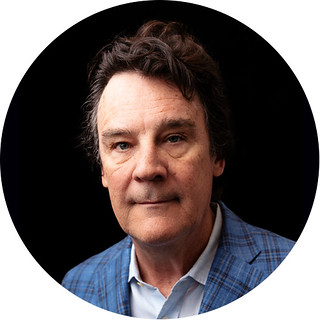 Greg Roberts, CEO of Stack's Bowers Galleries and A-Mark Precious Metals, was presented with the Harvey G. Stack Lifetime Achievement Award by the Professional Numismatist Guild during the recent Central States Numismatic Society convention. The award recognizes numismatists for their devotion to numismatics and for their significant additions to the body of PNG membership. Greg has been deeply involved with the hobby since he was a teenager. He started his own business in 1990, and that business has grown into a multi-billion dollar organization with affiliates headquartered on three continents.
Greg Roberts, CEO of Stack's Bowers Galleries and A-Mark Precious Metals, was presented with the Harvey G. Stack Lifetime Achievement Award by the Professional Numismatist Guild during the recent Central States Numismatic Society convention. The award recognizes numismatists for their devotion to numismatics and for their significant additions to the body of PNG membership. Greg has been deeply involved with the hobby since he was a teenager. He started his own business in 1990, and that business has grown into a multi-billion dollar organization with affiliates headquartered on three continents.
"Greg is one of the savviest people I have ever had the pleasure to know, if not the savviest," commented Stack's Bowers Galleries President Brian Kendrella. "I am so thankful to have worked with and learned from him for the past 15+ years. There is no one more deserving of this great recognition than Greg."
Greg brings to the hobby an extensive knowledge of the precious metals industry and in-depth experience in rare coin grading, trading and collecting. These attributes have kept him in the forefront of the hobby, including being named as one of Coin World's Most Influential People for four years (since its inception) and being honored in CoinAge's Book of Lists as one of the World's Greatest Coin Graders. In 2020, Greg was inducted into the Professional Coin Grading Society's Coin Dealer Hall of Fame and in 2011 he received the American Numismatic Association Harry J. Forman Dealer of the Year Award, presented to an ANA-member dealer who shows uncommon dedication to strengthening the hobby.
Greg is a highly skilled professional who has earned the respect of dealers and collectors alike over his decades in the hobby. His impact on the business has been significant, and he continues to spearhead innovative programs to enhance collecting in today's market. He is a member of the Professional Numismatists Guild (PNG), a life member of the American Numismatic Association (ANA), and a member of the Industry Council for Tangible Assets (ICTA).
MORE 2025 PNG AWARD WINNERS
PNG also issued a press release discussing Halperin and Roberts' awards, as well as the full list of winners. -Garrett
 The Professional Numismatists Guild (www.PNGdealers.org) has given its highest honor, the Abe Kosoff Founders Award, to James Halperin, co-founder of Heritage Auctions. The award was presented during the PNG's annual membership dinner on April 23, 2025.
The Professional Numismatists Guild (www.PNGdealers.org) has given its highest honor, the Abe Kosoff Founders Award, to James Halperin, co-founder of Heritage Auctions. The award was presented during the PNG's annual membership dinner on April 23, 2025.
The Kosoff Award is given to a PNG member-dealer who has shown steadfast dedication to the entire numismatic community and who has made a significant contribution to the Guild or to the numismatic fraternity. The award is named after PNG's Founding President who spearheaded the launch of the organization and served as its first President in 1954.
Halperin became a coin dealer as a teenager. In 1982 he partnered with Steve Ivy (PNG President from 2003 to 2005) to form what is now Heritage Auctions, the world's largest rare coin and collectibles auction firm. In 1984, Halperin became a leading pioneer in standardized coin grading with the creation of NCI, the Numismatic Certification Institute, the first privately owned collectibles grading service. He has been a member of PNG for 35 years.
The Kosoff Award and other honors were announced and presented following the PNG Day activities prior to the 2025 Central States Numismatic Society Convention (www.csns.org) in the Chicago suburb of Schaumburg, Illinois.
These are the other PNG award winners honored at the dinner.
Sol Kaplan Award: Presented by Numismatic Crime Information Center Founder and President Doug Davis to Kenneth Mullins for his efforts and contributions in combatting crimes against the numismatic community. A former New York City Police officer, Mullins recently retired after years as an owner and partner at Positive Protection, Inc., a firm that provided security assistance to coin show organizers and dealers nationwide. The Kaplan Award is named after a former PNG President whose work led to the apprehension of several people suspected of committing numismatic-related crimes.
Robert Friedberg Award: Presented by PNG President James Sego to numismatic researcher and PNG member John W. Dannreuther for his latest reference book, United States Proof Coins Volume II: Nickel. The Friedberg Award is named in honor of a publisher and author of numismatic reference books and is only given by PNG when there is deemed to be a worthy recipient.
Harvey G. Stack Lifetime Achievement Award: Presented by PNG member Kevin Lipton and PNG Executive Director John Feigenbaum to Dean Oakes and Greg Roberts for their years of extraordinary service to the numismatic community. Oakes is a long-time paper money dealer, researcher, and award-winning reference book author. Roberts is Chief Executive Officer of A-Mark Precious Metals and Spectrum Group International. This award for a lifetime of extraordinary devotion to the hobby or profession of numismatics is named after a former PNG President and influential dealer.
Significant Contribution Award: Presented by PNG Board of Directors member Greg Allen to David Crenshaw, executive director of the National Coin & Bullion Association. The award recognizes years of dedication and significant, beneficial contributions to numismatics.
Art Kagin Ambassador Award: Presented by former PNG President Jeff Garrett to former American Numismatic Association President Robert Campbell, owner of All About Coins, Inc., for distinguished service as an advocate of numismatic goodwill. This award is named after a former PNG President and nationally known dealer who provided outstanding service as an advocate of numismatic goodwill.
Distinguished Service Award: Presented by PNG Executive Director Feigenbaum to Wayde Milas, president of RARCOA (Rare Coin Company of America), for 10 years of distinguished service as a member of the PNG Board of Directors.
A new award category was added this year to recognize up and coming young professionals who participated in the PNG nexGen mentoring program.
nexGen Future Numismatist Award: Presented by nexGen Program Director Hunter Hicks to Frank Sawin, a business major at Bentley University who works at Northeastern Numismatics and plans to become a full-time coin dealer after graduating college.
During the awards dinner, PNG officials saluted four dealers for 50 years of membership in the organization: Jack Beymer, Dieter Gorny, Malcolm Varner, and Fred Weinberg.
Congratulations to all. -Editor
STACK'S BOWERS MAY 2025 WORLD PAPER MONEY
Stack's Bowers will be hosting their World Paper Money Showcase Auction on May 12 and 13. Select items are discussed below. -Garrett
AUSTRIA. Austro-Hungarian Bank. 50 Kronen, 2.1.1902. P-6. PMG Choice About Uncirculated 58 EPQ. A high grade example of this scarce type from Austria. Surely missing at this grade level from many collections, this particular example is surpassed in the PMG population report by just two finer examples. A handsome and fully original note perfect for an advanced type collection.
To read the complete item description, see:
AUSTRIA. Austro-Hungarian Bank. 50 Kronen, 2.1.1902. P-6. PMG Choice About Uncirculated 58 EPQ.
(https://auctions.stacksbowers.com/lots/view/3-1ISW26/austria-austro-hungarian-bank-50-kronen-211902-p-6-pmg-choice-about-uncirculated-58-epq)
BULGARIA. B'lgarska Narodna Banka. 1000 Leva, 1943. P-67a. PMG Gem Uncirculated 66 EPQ. Estimate: $500 - $1,000.
To read the complete item description, see:
BULGARIA. B'lgarska Narodna Banka. 1000 Leva, 1943. P-67a. PMG Gem Uncirculated 66 EPQ.
(https://auctions.stacksbowers.com/lots/view/3-1ISWO3/bulgaria-blgarska-narodna-banka-1000-leva-1943-p-67a-pmg-gem-uncirculated-66-epq)
CANADA. Bank of Canada. 1000 Dollars, 1954. BC-36. Devil's Face. PCGS Banknote Extremely Fine 40. Coyne - Towers signature combination. The key denomination of the famed Devil's Face series, with a total of just 30,000 notes printed. Unlike the lower denominations only issued with a single signature combination and rare in any grade. This example still retains good paper quality and a strong appearance, making it perfect for the color hoping to acquire this type without spending well into the 5-figures for an uncirculated piece. PCGS Banknote Comments "Pinholes, Partially Removed Writing." Estimate: $3,500 - $5,000.
To read the complete item description, see:
CANADA. Bank of Canada. 1000 Dollars, 1954. BC-36. Devil's Face. PCGS Banknote Extremely Fine 40.
(https://auctions.stacksbowers.com/lots/view/3-1ISWZK/canada-bank-of-canada-1000-dollars-1954-bc-36-devils-face-pcgs-banknote-extremely-fine-40)
HONG KONG (SAR). Government of Hong Kong. 1 Dollar, ND (1935). P-311. KNB1a. PMG About Uncirculated 53. A high-grade example of this popular type from Hong Kong with the stately portrait of King George V at right. Typically seen in heavily circulated condition with high grade examples such as this quite scarce. Estimate: $1,000 - $1,750.
To read the complete item description, see:
HONG KONG (SAR). Government of Hong Kong. 1 Dollar, ND (1935). P-311. KNB1a. PMG About Uncirculated 53.
(https://auctions.stacksbowers.com/lots/view/3-1ISZQT/hong-kong-sar-government-of-hong-kong-1-dollar-nd-1935-p-311-knb1a-pmg-about-uncirculated-53)
IRELAND, NORTHERN. Northern Bank Limited. 100 Pounds, 1.10.1968. P-186a. NR 86. WBG Extremely Fine 40. Final date. Printing of 4,300 notes. The highest denomination of this series and a large format note that was first issued in 1943. This denomination was printed with just those two dates only and with a total printing of just 5,300 notes. A deceptively difficult type that had massive purchasing power at the time of issue. This a wholesome, problem-free example with excellent color. Estimate: $1,000 - $2,000.
To read the complete item description, see:
IRELAND, NORTHERN. Northern Bank Limited. 100 Pounds, 1.10.1968. P-186a. NR 86. WBG Extremely Fine 40.
(https://auctions.stacksbowers.com/lots/view/3-1IT0FC/ireland-northern-northern-bank-limited-100-pounds-1101968-p-186a-nr-86-wbg-extremely-fine-40)
ITALY. Banca d'Italia. 100 Lire, 9.12.1942. P-59. PMG Superb Gem Uncirculated 67 EPQ. Tied with one other example as the finest graded on the PMG population report. Perfect for an advanced type set, and a classic Italian note seen here in top grade with exceptional paper quality, and near perfect centering. An ideal representative for the quality-conscious collector. Estimate: $750 - $1,500.
Ex. Italy Family Collection.
To read the complete item description, see:
ITALY. Banca d'Italia. 100 Lire, 9.12.1942. P-59. PMG Superb Gem Uncirculated 67 EPQ.
(https://auctions.stacksbowers.com/lots/view/3-1IT0LV/italy-banca-ditalia-100-lire-9121942-p-59-pmg-superb-gem-uncirculated-67-epq)
PORTUGUESE INDIA. Banco Nacional Ultramarino. 1 Rupia, 1924. P-23A. Jhun&Rez 12.21.1. PMG Very Fine 20. PMG Comments "Stained." Estimate: $400 - $600.
To read the complete item description, see:
PORTUGUESE INDIA. Banco Nacional Ultramarino. 1 Rupia, 1924. P-23A. Jhun&Rez 12.21.1. PMG Very Fine 20.
(https://auctions.stacksbowers.com/lots/view/3-1IT2YL/portuguese-india-banco-nacional-ultramarino-1-rupia-1924-p-23a-jhun-rez-12211-pmg-very-fine-20)
SWITZERLAND. Schweizerische Nationalbank. 1000 Franken, 28.3.1963. P-52f. WBG Choice Uncirculated 64 TOP. Large format high denomination banknote printed by TDLR featuring geometric designs, woman at right on the obverse, and scene of allegorical figures portraying "Danse Macabre" on the reverse. One of the most iconic world notes and always popular, especially at this grade level. A desirable example and no doubt a welcome addition to an advanced type collection. Estimate: $1,000 - $2,000.
To read the complete item description, see:
SWITZERLAND. Schweizerische Nationalbank. 1000 Franken, 28.3.1963. P-52f. WBG Choice Uncirculated 64 TOP.
(https://auctions.stacksbowers.com/lots/view/3-1IT51E/switzerland-schweizerische-nationalbank-1000-franken-2831963-p-52f-wbg-choice-uncirculated-64-top)
TRINIDAD & TOBAGO. Government of Trinidad and Tobago. 2 Dollars, 2.1.1939. P-6b. PMG About Uncirculated 55. Very nice example, and sits atop the PMG population. PMG Comments "Stains." Estimate: $500 - $700.
To read the complete item description, see:
TRINIDAD & TOBAGO. Government of Trinidad and Tobago. 2 Dollars, 2.1.1939. P-6b. PMG About Uncirculated 55.
(https://auctions.stacksbowers.com/lots/view/3-1IT57D/trinidad-tobago-government-of-trinidad-and-tobago-2-dollars-211939-p-6b-pmg-about-uncirculated-55)
VIETNAM, SOUTH. National Bank of Vietnam. 5000 Dong, ND (1975). P-35s1. Specimen. PMG Superb Gem Uncirculated 67 EPQ. Estimate: $800 - $1,200.
To read the complete item description, see:
VIETNAM, SOUTH. National Bank of Vietnam. 5000 Dong, ND (1975). P-35s1. Specimen. PMG Superb Gem Uncirculated 67 EPQ.
(https://auctions.stacksbowers.com/lots/view/3-1IT5M6/vietnam-south-national-bank-of-vietnam-5000-dong-nd-1975-p-35s1-specimen-pmg-superb-gem-uncirculated-67-epq)
Some beautiful banknotes! -Editor
STEPHEN ALBUM RARE COINS AUCTION 52
Here's the press release for Stephen Album Rare Coins upcoming Auction 52. -Garrett
 Stephen Album Rare Coins will hold its next premier sale Auction 52 from May 15-18, 2025 at their offices in Santa Rosa, California. The auction is made up of 3550 lots of Ancient, Islamic, Indian, Chinese, and World Coins. The first two days will include in-person bidding as well as online bidding, while the third and fourth days will be online-only sessions.
Stephen Album Rare Coins will hold its next premier sale Auction 52 from May 15-18, 2025 at their offices in Santa Rosa, California. The auction is made up of 3550 lots of Ancient, Islamic, Indian, Chinese, and World Coins. The first two days will include in-person bidding as well as online bidding, while the third and fourth days will be online-only sessions.
The firm's CEO Joseph Lang notes: "The coin market is very strong currently and our consignors as well as our bidders have been eager to contribute to and participate in our highly successful auctions. Our current auction has a wide array of interesting items that our clients have come to expect to see in our sales".
Featured collections in the auction include:
- The Dr. Robert A. Rosenfeld Collection of World Coins
- The Almer H. Orr III Collection of World Coins
- The Roland Dauwe Collection of Coins Minted at Qumm
- The Dr. Dirk Löer Collection of Chinese Coins
- The Solar Collection of Indian Coins
Lot viewing is available by appointment at the firm's offices in Santa Rosa, California.
Some highlights from the sale follow:
Lot 613. ANCIENT INDIA: KUSHAN: Huvishka, ca. 155-187 AD, gold dinar (7.97g), G-156.2 (same dies), ANS Kushan-723, diademed and crowned half-length bust left, with flames above right shoulder, holding mace and ankusa (elephant goad), clouds below, ÞAOhAHOÞAO O-OhÞKI KOÞANO // Skando-Komaro and Bizago standing facing, with heads nimbate and toward each other, tamgha between them, CKAN-?O KOM-AP-O BIZAGO, small scrape and filing mark on edge, extremely rare with only a few auction examples, XF
Estimated at $8,000 to $12,000
To read the complete item description, see:
Lot 613. ANCIENT INDIA: KUSHAN: Huvishka, ca. 155-187 AD,
(https://www.sarc.auction/KUSHAN-Huvishka-ca-155-187-AD-AV-dinar-7-97g-XF_i56388328)
Lot 752. INDIAN STATES: TRIPURA: Isvara Manikya, 1600, silver tanka (16.67g), SE1522 (1600), KM-114, RB-190, lion left, border of annulets // four-line legend sri sri yutisvara manikya deva sri sri isvara sri isvara maha devyah, citing the two Queens, both called Isvara, wonderful strike, PCGS graded AU55, RRR.
Ex. David Cashin Collection
Estimated at $4,000 to $6,000
To read the complete item description, see:
Lot 752. INDIAN STATES: TRIPURA: Isvara Manikya,
(https://www.sarc.auction/TRIPURA-Isvara-Manikya-1600-AR-tanka-16-67g-SE1522-1600-PCGS-AU55_i56388467)
Lot 785. BRITISH INDIA: Victoria, Empress, 1876-1901, gold mohur, 1882-C, KM-496, Prid-14, S&W-6.11, an attractive mint state example with light luster, NGC graded MS62
Estimated at $4,000 to $4,500
To read the complete item description, see:
Lot 785. BRITISH INDIA: Victoria,
(https://www.sarc.auction/BRITISH-INDIA-Victoria-Empress-1876-1901-AV-mohur-1882-C-NGC-MS62_i56388500)
Lot 1301. NEPAL: KATHMANDU: Lakshmi Narasimha, 1620-1641, silver mohar (10.14g), KM-150, "Ala-ud-din" type, octagon formed from interlocked squares with lion inside, pseudo-Arabic text around imitating prototypes issued by Ala-ud-Din Muhammad Shah Khalji // Nepali sri sri within circle, text around, PCGS graded EF45
Estimated at $5,000 to $7,000
To read the complete item description, see:
Lot 1301. NEPAL: KATHMANDU: Lakshmi Narasimha,
(https://www.sarc.auction/NEPAL-KATHMANDU-Lakshmi-Narasimha-1620-1641-AR-mohar-10-14g-PCGS-XF45_i56389016)
Lot 1416. CHINA: Ingots: Qing Dynasty, silver 50 tael (liang) sycee (1840.5g), Jilin Dachibao (Big Winged) type, tong qian in curved stamp, and yuan in circular stamp atop silver ingot, authenticated in GBCA box, GBCA graded AU50
Estimated at $10,000 to $15,000
To read the complete item description, see:
Lot 1416. CHINA: Ingots: Qing Dynasty,
(https://www.sarc.auction/CHINA-Ingots-Qing-Dynasty-AR-50-tael-liang-sycee-1840-5g-GBCA-graded-AU50_i56389131)
Lot 1497. CHINA: TIBET: gold 20 srang, Gser Khang mint, BE15-52 (1919), Y-20, L&M-1063A, Autonomous Tibetan issue, PCGS graded AU58
Estimated at $4,000 to $6,000
To read the complete item description, see:
Lot 1497. CHINA: TIBET:
(https://www.sarc.auction/TIBET-AV-20-srang-Gser-Khang-mint-BE15-52-1919-PCGS-AU58_i56389212)
Lot 1512. CHINA: TIBET: Paper Money, 50 tam, BE16-59 (1913), Pick-5, Autonomous Tibetan issue, blue ink, two lions at center, unique error with missing serial numbers and seal, PCGS graded VF30, ex Alexander Lissanevitch Collection.
Ex. Stack's Bowers & Ponterio April 2017 Hong Kong Auction, Lot 70600.
Estimated at $5,000 to $6,000
To read the complete item description, see:
Lot 1512. CHINA: TIBET: Paper Money,
(https://www.sarc.auction/TIBET-Paper-Money-50-tam-BE16-59-1913-PCGS-VF30_i56389227)
The firm is currently accepting consignments for its forthcoming auctions in 2025.
Please see www.stevealbum.com for more information.
NOONAN OFFERS RARE GOLD BERKSHIRE TOKEN
This press release describes a rare gold token offers by Noonans in their upcoming British Tokens and Art Deco Medals sale. -Editor
Noonans are to offer the highest value gold token struck in England - a very rare gold 19th century 40-shilling token from Reading, Berkshire depicting a bust of King Alfred. Dating from 1812, it is estimated to fetch £6,000-8,000, and is being sold as part of a single owner collection in the sale of British Tokens and Art Deco Medals at Noonans Mayfair on Tuesday, May 13, 2025, at 12pm.
Peter Preston-Morley, Special Projects Director (Numismatics) at Noonans explains:
"Tokens were a currency substitute issued by private individuals, merchants, and organisations when governments were not, for various reasons, issuing small change. They are mostly copper, although during the Napoleonic wars silver tokens were also made and circulated. This superb Reading gold 40 shillings was issued by philanthropist and reformer, John Monck and was bought 55 years ago. Very few of the original issue of 200 survive, however some examples must have circulated, albeit briefly and this token comes up for auction very occasionally."
The gold token bears the name John Berkeley Monck (1768-1834), who was educated at Eton, studied law at Middle Temple and settled at Coley Park, Reading, in 1796. A philanthropist and reformer, Monck was left a £100,000 fortune on the death of his father in 1809. In determining to do something about the state of the precious metal coinage in circulation, Monck had 70oz. of standard gold coined into 40-shilling pieces by Edward Thomason's Birmingham manufactory sometime in early 1812. Monck's plans for a second issue, the gold for which he advertised to buy in the Reading Mercury on 13 April 1812, were abandoned after an intervention by the Prime Minister, Spencer Percival, who himself was assassinated on 12 May 1812 while leaving the chamber of the House of Commons. Monck unsuccessfully contested one of the borough seats for Reading in the general election of November 1812; he was later elected MP for Reading in 1820 and again in 1826
Comprising 56 lots, the collection which is titled the ‘Royal Berkshire' Collection of Berkshire tokens, tickets and passes consists of 374 17th century issues, plus a further 189 from the 18th to the 20th centuries. It is expected to fetch in the region of £22,000.
As Mr Preston-Morley adds: "The collection was formed largely over a thirty-year period between 1965 - 1995 and is the most important and wide-ranging cabinet for the county of Berkshire that has ever been put together by a private individual. The owner, well-known to the principal dealers, diligently pursued opportunities to buy pieces from a range of sources. Even so, some 17th century issues continued to elude him so there are gaps in this section of the collection; he was, however, able to secure most of the pieces he needed from the fabled Norweb collection of 291 pieces that were not required for the National Collection and, along the way, some of the 181 tokens put together by Barzillai Lowsley, the first numismatist to study the county's tokens in any depth. Regretfully, the county still lacks a modern illustrated reference, and one hopes that the appearance of this collection will help to lead to such a volume one day."
Elsewhere in the collection is an even greater rarity - the companion silver 40 shillings which is believed to be the first specimen to appear at auction since 1968 and is estimated at £1,500-2,000 (Lot 27).
The collection includes examples from Abingdon, Bracknell, Bray, Bucklebery, Cookham, Hungerford, Lambourne, Maidenhead, Newbury, Sonning, Wallingford to Wantage, Windsor and Wokingham. Estimates range from £5 upwards.
For more information, or to order, see:
https://www.noonans.co.uk/
SINCONA OFFERS QUEEN ANNE MEDALS
This article by Ursula Kampmann is illustrated with medals of Queen Anne offered in the May 2025 SINCONA sale. The first image is the coronation portrait of Queen Anne, ca. 1702 by John Costerman (National Portrait Gallery, London). -Editor
On 26 May 2025, SINCONA will auction off part 6 of the British Collection presenting the medals of this ensemble. In this article, we will show you some of the treasures among the lots and explore the story of Queen Anne. Under her rule, Great Britain became the most important trading power in Europe.
 What do you know about Queen Anne? Numismatists will immediately think of the Vigo raid and the English coins struck from Spanish silver. Art connoisseurs will picture an architectural style, antiques dealers a particular type of furniture, cineastes Olivia Colman – and that's about it.
What do you know about Queen Anne? Numismatists will immediately think of the Vigo raid and the English coins struck from Spanish silver. Art connoisseurs will picture an architectural style, antiques dealers a particular type of furniture, cineastes Olivia Colman – and that's about it.
But none of this does justice to Queen Anne. She did not have an easy life. And yet she had a profound impact on setting Britain's course for the future. In this article, we will tell you all about it through her medals.
The Background
Let us first examine why Queen Anne came to power in the first place. This requires a look at her lineage. Anne's father was James II, the younger brother of Charles II, who had regained his father's throne after Cromwell's death. As Charles II had no children, James inherited the throne. However, he was very unpopular with the upper classes. This was mainly due to a conflict of interest: James wanted to rule – and so did the upper classes. Religion was nothing but a wonderful excuse to cover up their own lust for power. That is why the upper classes condemned James' conversion to Catholicism and his second marriage to a Catholic woman. This had few consequences as long as the children from this marriage kept dying. But then the queen gave birth to a son who survived and became the legal heir to the throne.
An heir with undoubted dynastic legitimacy would have drastically reduced the influence of the upper classes on the royal office. And he was a Catholic! You can decide for yourself which of these two arguments motivated the seven British nobles to offer William of Orange the kingship just twenty days after his birth. William was not only a Calvinist, but also the husband of Mary, James' eldest daughter from his first marriage. It was therefore possible to construct a claim to the throne. William and Mary brought in the Dutch army, James fled with his wife and the pretender to the throne; on 11 April 1689, England had a new king and queen. Propaganda would later hail the events as the Glorious Revolution, but it is probably more correct to talk of a coup d'état.
((01 – Gold medal commemorating the landing of William of Orange at Torbay in 1688, created by R. Arondeaux. 49.3 mm. 58.41 g. Extremely Fine. Estimate: CHF 15,000. From SINCONA Auction 96 (26 May 2025), No. 134.))
Medals like these contributed to the myth of the Glorious Revolution. The reverse shows a female personification, with the three crowns of England, Scotland and Ireland on her head. She bows to William, dressed as a Roman emperor, and greets him with a handshake. The orange tree, entwined with English roses and Scottish thistles, also represents the alliance. The sun rises in the background, heralding the country's new and glorious future, while the old king flees below.
The inscription tells us how to interpret the scene: With God as protector and justice as companion. The reverse depicts Dutch invasion troops fighting, as the inscription claims, against the child of destruction and for English freedom. Of course, this propaganda has nothing to do with historical truths.
Why Did Queen Anne Ascend the Throne?
Mary died childless of smallpox in 1694, aged just 32. This was not a problem until 29 June 1700. For she had her younger sister Anne, who could inherit the throne after William's death. And Anne, despite twelve miscarriages and the loss of four children, still had a son, now a proud 11-year-old, who would inherit the throne after her. But on 29 June, the boy died of smallpox. It was a tragedy not only for the mother, but also for the English nobility as the new line of rulers, which had been so carefully established, had undoubtedly come to an end. There was a very real risk for power to return to James II. That would have been a catastrophe! Not because he was Catholic, but because he would have disempowered all those involved in his expulsion.
What followed was the Act of Settlement – another euphemism. For it was not a settlement, but another breach of law. On 24 June 1701, Parliament voted to strip James II and his descendants of all rights to the throne and to transfer the claim to Sophie of the Palatinate, a granddaughter of James I through her mother.
The decision was made just in time because William died on 19 March 1702 as the result of a riding accident and Anne (but not her husband George!) was crowned.
((02 – Gold medal commemorating the coronation of Queen Anne in 1702. 35.4 mm. 18.57 g. Extremely Fine. Estimate: CHF 10,000. From SINCONA Auction 96 (26 May 2025), No. 197.))
The Coronation of Queen Anne
This is remarkable. Was Parliament afraid of having to deal with another king as decisive as William? Indeed, parliamentarians tried to curb the Queen's power in other ways. They passed a plethora of laws that almost anticipated the modern separation of powers.
This makes the depiction Queen Anne chose for her coronation medal all the more interesting. It shows her as Pallas Athena, killing a giant with lightning. The inscription reads: She is the Vice-Regent of the Thunderer. At first sight, this appears to be a strange motif and an unusual inscription. But the English upper classes remembered all too well another medal designed on behalf of Anne's grandfather, Charles II, to mark his return to the throne in 1660: Zeus, representing Charles II, hurls his thunderbolts at the earthlings, symbolising the men who had robbed his father of his office and his life.
With this motif, Anne sent a clear warning to her political opponents to take her and her reign seriously. Indeed, over the next few months, she managed to significantly strengthen her position vis-à-vis Parliament.
((03 – Gold medal commemorating the victory of Blenheim in 1704 by J. Boskam. 44 mm. 49.91 g. Estimate: CHF 15,000. From SINCONA Auction 96 (26 May 2025), No. 205.))
The Duke of Marlborough
The people she surrounded herself with also helped in this regard. She had to thank her predecessor for her most important supporter. William had appointed John Churchill, Earl of Marlborough, as commander-in-chief of his forces.
This was in response to the death of the Spanish King Charles II, who had died childless on 1 November 1700. With his death, the Spanish Empire was up for grabs. Of course, the Austrian Habsburgs laid claim to it. But the rising power of France under Louis XIV would have loved to take it over, too. This would have had unforeseeable consequences for world trade, a risk that England and the Netherlands were not willing to take. Nevertheless, it was a stroke of genius on Churchill's part to persuade both the Habsburg Emperor Leopold I and the Dutch States-General to take joint action against France – both diplomatic and, above all, military.
The Battle of Blenheim, won by the allies on 13 August 1704, was the fruit of Churchill's talent, as this medal shows. Churchill dominates the scene on horseback. The circumscription also focuses on him: Under Marlborough's command, the French and Bavarians were once again defeated on the Danube, crushing the immense army of the enemy.
((04 – Gold medal commemorating the victory of Blenheim in 1704 by J. Crocker. 34.4 mm. 25.13 g. About Uncirculated. Estimate: CHF 10,000. From SINCONA Auction 96 (26 May 2025), No. 206.))
The Victory of Blenheim
The enemy army was crushed. That is correct. Because two military geniuses had worked together: Churchill and Prince Eugene of Savoy. With the Battle of Blenheim – or the Battle of Höchstädt, as the German and French call it – they did lasting damage to the French aura of invincibility. This gold medal proclaims in its circumscription: 36,000 French and Bavarians captured and killed in Blenheim; 163 field insignia captured.
It shows Britannia enthroned on a globe with a spear and Victoria. At her feet a naked warrior, kneeling on the captured weapons and some keys. The keys represent the many cities that came under imperial rule as a result of the victory. Max Emanuel had to go into exile; his Bavaria was occupied; France lost all influence in southern Germany.
((05 – Gold medal commemorating the Battle of Ramillies in 1706 by J. Crocker. 34.9 mm. 24.28 g. Very Fine to Extremely Fine. Estimate: CHF 5,000. From SINCONA Auction 96 (26 May 2025), No. 214.))
The Victory of Ramillies
Two years later, Churchill won another major victory near the Belgian town of Ramillies. Again, his opponents lamented not only heavy losses – 13,000 men died and 6,000 were captured – but also the enemy's reconquest of the Spanish Netherlands, with the rich trading cities of Bruges, Antwerp and Ghent.
The way in which Crocker depicted the event on this medal was rather innovative: we see the involved provinces on a map, the two Famae, messengers of the gods with long trumpets, between them.
The Act of Union 1707
And yet it was not these great victories that paved the way for the Act of Union 1707 – the unification of England and Scotland into Great Britain – but a mixture of chance, economic mismanagement and political interests.
After all, the Scottish Parliament had repeatedly toyed with an alternative succession arrangement in favour of James II, much to the displeasure of English politicians. As an independent kingdom with its own parliament, Scotland could – in a worst-case scenario – have seceded under its own ruler, especially because England's forces were tied up abroad.
But then the Scottish economy went into a tailspin. First came the Seven Lean Years, during which the common people suffered terribly. Poor harvests led to famine, which killed between 5% and 15% of all Scots.
The upper classes were hardly affected, but they too had economic worries. They had backed the wrong horse. Scottish investors had wanted to participate in world trade and had set up a trading company for this purpose that was supposed to operate a trading colony in the Darién Gap, of all places. The problem was the scale of the investment. Around 20% of Scotland's total financial resources had been invested in the project. When the trading company collapsed and all investors lost their money, Scotland ran the risk of suffering from an uncontrollable economic crisis. It was in this moment that the English parliament tempted Scotland with the prospect of a union and the vast sums of money that would flow to Scotland. The deal was struck. And to this day, Scottish folk singers castigate the rogues who sold Scottish freedom for English gold. https://www.youtube.com/watch?v=Hyj6c5VPLHQ
((06 – Silver medal commemorating the union of England and Scotland in 1707 by J. Croker. 47.2 mm, 42.11 g. Extremely Fine. Estimate: CHF 300. From SINCONA Auction 96 (26 May 2025), No. 218.))
A silver medal commemorates the event. Its reverse shows the English lion (with crown!) with a shield depicting the Scottish thistle. To its left is the Scottish unicorn. It wears a crown around its neck, with the usual chain, and presents an early form of the Union Jack: the English Saint George's Cross superimposed on the Scottish Saint Andrew's Cross.
Look carefully at the bust of the Queen, as you will see this depiction of gown and crown again on an undated gold medal, which must therefore have been made at about the same time.
((07 – Gold medal commemorating the union of England and Scotland in 1707, unsigned by J. Croker. 70.5 mm diameter. 272.08 g. Attractive Very Fine. Estimate: CHF 25,000. From SINCONA Auction 96 (26 May 2025), No. 219.))
We are talking about a heavy gold medal that does not seem to refer to a particular historical event. It rather describes Anne's role in the new United Kingdom. It echoes the theme of the coronation medal. We see a defending Anne with spear and Medusa's shield. The inscription reads: The Palladium of New Troy.
The palladium was the most sacred object of worship in ancient Rome. As we know from Vigil's Aeneid, the Roman believed that their forefather Aeneas had rescued it from the burning city of Troy, because no city could perish as long as it fought just wars and kept the palladium within its walls. He took the palladium to Rome, where the Vestal Virgins kept it. By linking herself to this myth, Anne presented herself as a guarantor of security in the new Great Britain created by the union of England and Scotland.
We should also remember that, in the early 18th century, gold and silver medals were not intended as collectors' items but mainly used as gifts of great monetary value in diplomatic circles. We can well imagine that Queen Anne wanted to use these noble gifts to win supporters for her policies as the united parliament reorganised itself.
((08 – Gold medal commemorating the Peace of Utrecht in 1713, by J. Crocker. 59.3 mm. 122 g. Extremely Fine to Uncirculated. Estimate: CHF 15,000. From SINCONA Auction 96 (26 May 2025), No. 245.))
The Treaty of Utrecht
Although Anne was the de facto Queen, Parliament drastically limited her powers. And, just like today, Parliament was dominated by parties that not only had their own worldviews but also put the interest of their clientele first. The Whigs, led by John Churchill, fought the Tories, who wanted to end the costly war over the Spanish succession and reduce the tax burden. The Tories won the election in 1710 and immediately began to negotiate a seperare peace agreement with France. They succeeded in getting the Congress for Peace to begin in Utrecht on 29 January 1712. As early as on 11 April 1713, the congress achieved important agreements between the British and the French. The British had been very accommodating to Louis XIV! The terms of the treaty did not reflect the military reality in any way.
Britain recognised Louis XIV's grandson as the new ruler of Spain, as long as he promised that France and Spain would never be united in a personal union under a member of the House of Bourbon. (It is interesting to know that he was in no place to make such a promise because of the Salic Law of Succession.) In return, Louis XIV renounced any further support for the descendants of James II.
Britain secured a number of important pieces from Spain's possessions – including Gibraltar, Menorca and the monopoly on the lucrative slave trade with the Spanish colonies in America. In addition, there were large territories in North America that were to become the profitable heart of the British colonies. Great Britain left the negotiating table as the most important trading power in Europe, as this medal shows: in addition to Britannia, we see a plethora of different types of ships, all used in trade.
Anne's Death
While the diplomats in Utrecht worked out the final details of the peace agreement, Anne faced a serious crisis in government. Lord Treasurer Robert Harley was losing the support of even his closest friends. Anne herself was also extremely upset by his behaviour. She was seriously ill herself, often bedridden, in failing health, and had to deal with a Lord Treasurer who neglected his office, often arrived late, even drunk at official meetings, was disrespectful of her, and seemed to have lost control of the situation. 27 July 1714 Anne publicly announced that she had lost confidence in Robert Harley, and he was forced to resign. But even after two crisis meetings, the Queen was unable to form a new government. It was a situation that weighed heavily on her mind.
On 30 July 1714 – just before the third emergency meeting – she suffered a stroke which left her unable to speak. She died on 1 August 1714 at 7.30 am. We know what her personal physician wrote to a friend: "I believe sleep was never more welcome to a weary traveller than death was to her." Anne was not even 50 years old!
((09 – Gold medal commemorating the proclamation of George I on 12 August 1714 by E. Hannibal. 66.8 mm. 172.97 g. Extremely Fine to Uncirculated. Estimate: CHF 30,000. From SINCONA Auction 96 (26 May 2025), No. 255.))
A German Ruler on the English Throne
It was time for the question of succession. The whole of England was wondering who would take over: a Stuart or this German Elector from Hanover who could not even speak proper English. We know what happened. The House of Hanover would rule England until 1901, when it was replaced by the House of Saxe-Coburg and Gotha, which was renamed the House of Windsor in the middle of the First World War.
And the Jacobites? They tried several times to take the British throne. They did not succeed.
For more information. or to bid, see:
https://www.sincona.com/en/
6888 POSTAL BATTALION CONGRESSIONAL GOLD MEDAL
The 6888th Central Postal Directory Battalion, a unit of black women who addressed the backlog of mail in England and France during World War II, just received a Congressional Gold Medal. -Garrett
On Wednesday, Don Everhart posted on Facebook:
Congressional Gold Medal ceremony today at The Capitol for the 6888 Central Postal Directory Battalion, an all African American Battalion of women tasked with sorting the accumulated mail that piled up in warehouses in France and England during WW2. "No mail, low morale." Both sides are my designs.
To read the Facebook post, see:
https://www.facebook.com/1203759735/posts/10232840907824022/?rdid=30d2r5niHzqLNHIH#
An NPR article reported on the ceremony. -Garrett
House Speaker Mike Johnson (right) presents the Congressional Gold Medal for the 6888th Central Postal Directory Battalion to Stanley Earley III, the son of battalion commander Maj. Charity Adams, during a ceremony in Emancipation Hall on Tuesday in Washington, D.C.
The only Women's Army Corps unit of color to serve overseas in World War II received a Congressional Gold Medal on Tuesday, exactly 80 years after pulling off an incredible organizational feat.
The 6888th Central Postal Directory Battalion — nicknamed the Six Triple Eight — was a predominantly Black, all-female unit that was deployed to Europe towards the end of the war to tackle a burgeoning crisis: a backlog of some 17 million pieces of undelivered mail.
When the women arrived in Birmingham, England, in February 1945, they were greeted by multiple warehouses full of mail addressed to the roughly 7 million American soldiers and government personnel stationed across Europe, many of whom were frustrated because they hadn't received any letters for months or even years.
There was so much mail that one general estimated it would take the unit six months to sort and deliver it all, according to the National Museum of the United States Army. But the Six Triple Eight — whose motto was "no mail, low morale" — managed to do it in half the time, even in harsh conditions.
After their success in Birmingham — and the end of the war in Europe — the unit accomplished similar missions in Rouen and Paris, France. And while the unit's members received several medals upon its return to the U.S. in 1946, there was no welcoming ceremony or public recognition of their service.
Don adds:
"It was a very touching ceremony for a well deserved group of brave Americans."
In 2024, a movie about the battalion, The Six Triple Eight, was released, directed by Tyler Perry. Here is the film's IMDB page: https://www.imdb.com/title/tt24458622/. -Garrett
To read the complete article, see:
A Black, all-female WWII unit got a congressional medal 80 years after making history
(https://www.npr.org/2025/04/29/nx-s1-5380784/six-triple-eight-congressional-gold-medal)
NEW CRACKDOWN OVER EURO NOTES
Kavan Ratnatunga passed along this article noting that "substandard" Euro notes are being withdrawn by some banks. Thank you. -Editor
In an effort to combat counterfeit euro bills, the government of Spain has announced plans to yank some types of euro notes from circulation.
As of this July, reports the U.K.'s Metro, Spain's central bank will begin withdrawing old and/or wrinkled €50 notes from circulation.
Visitors who attempt to spend a euro note that is crumpled, torn, or overly stained with anti-counterfeit detection markings from prior transactions may find that vendors refuse to accept the bills. In Spain, particularly for higher-value euro denominations, only crisp and clean bills will be considered legal tender.
"The bank wants to phase out notes that are too crumpled, faded or torn to be accepted by machines or cashiers," reports Euro Weekly News. "These bills, often mistaken for counterfeits, are being targeted in a larger effort to ensure that cash remains a reliable payment option in a digital world."
That sounds sensible enough, and besides, most of the bills that a tourist withdraws from a Spanish ATM would likely be in good condition. So why worry?
Because unscrupulous vendors who want to get rid of substandard bills will be more likely to try to hand unsuspecting foreign tourists torn or crumpled notes as change.
The biggest concerns are for bills of €50 or higher, which are more likely to be fraudulent.
Exchanging bad euro notes for good ones requires people to have enough time to locate a Bank of Spain during opening hours, a hassle that some shopkeepers will try to avoid by slipping the worn-out money to you instead.
To read the complete article, see:
New Crackdown Over Euro Notes in Europe Could Rip Off the Unaware Traveler
(https://www.frommers.com/tips/money-and-currency/new-crackdown-over-euro-notes-in-europe-could-rip-off-the-unaware-traveler/)
MONEY EXCHANGES REJECTING CHOPMARKED BILLS
Kavan Ratnatunga writes:
"On the same line, banknotes with tiny chopmarks which were discussed a few years ago are now hard to exchange in Asia. Banks accept them for deposit and issue them, but Asian Money Exchanges reject them. In Sri Lanka, they are discounted by 5 to 10%."
An Aussie travelling through Thailand has discovered his money was practically worthless thanks to a tiny detail. While rips and tears can sometimes reduce the value of notes, a mark meant to verify legitimate notes could have been to blame for the awkward situation.
Peter Fuller was left scratching his head when he tried to get some local currency on his trip. He asked people on social media if they knew why he was knocked back.
"Went to exchange AUS currency for Thai baht in Thailand and they rejected this note because of this little blue stamp, anyone got any idea why?" he said on Facebook.
Thailand has very strict rules on the type of currency it accepts, according to Wise, and it will turn away any notes that have been "defaced" or "damaged". Travellers have been warned to bring only "crisp" and "clean" notes if they want to get them exchanged for local currency.
In this case, the teller at the currency exchange might have looked at the blue stamp as being defaced and rejected it.
This has stung other travellers in the past, with people posting online how they had notes knocked back because of random markings you'd normally not even notice.
To read the complete article, see:
Man discovers $100 note was 'worthless' due to tiny detail
(https://au.finance.yahoo.com/news/man-discovers-100-note-was-worthless-due-to-tiny-detail-040232359.html)
How ironic - a stamp meant to attest to authenticity is causing banknotes to be discounted or rejected. -Editor
To read earlier E-Sylum articles, see:
CHOPMARKS ON MODERN U.S. PAPER MONEY
(https://www.coinbooks.org/esylum_v17n07a21.html)
MORE CHOPMARKS ON MODERN U.S. PAPER MONEY
(https://www.coinbooks.org/esylum_v17n08a08.html)
MORE CHOPS ON MODERN U.S. PAPER MONEY
(https://www.coinbooks.org/v27/esylum_v27n12a15.html)
MORE CHOP MARKS ON PAPER MONEY
(https://www.coinbooks.org/v27/esylum_v27n32a05.html)
THE 2025 GOLD MARKET
Business Insider published a nice article on the state of the gold market. Here's an excerpt - see the complete article online. -Editor
Inside New York's gold rush, where buyers are snapping up bullion, bars, and actual Trump coins.
"Over the last six months, we're doing four times the volume that we did before that," Kahan said. "We have north of $1 million in transaction volume per day."
The 57-year-old Kahan owns Bullion Trading LLC, a gold and silver dealer in the heart of New York City's Diamond District. Despite the neighborhood's name, there's more to the area than just diamonds. The one block stretch in Midtown Manhattan is also an international hub for gold and other precious metals.
With gold prices smashing record after record in 2025, Business Insider paid a visit to the district to do some window shopping (emphasis on window).
The New York gold rush
Bullion Trading LLC is located in the basement of a building on 47th Street. It's quiet and insulated from the noise of the street above, where enthusiastic salespeople wear big signs advertising gold and jewelry and aggressively solicit passersby.
Customers are hearing about gold on the news and calling up the store to learn more and buy, Kahan told BI.
But people aren't just buying — they're also taking advantage of sky-high prices by selling their holdings.
"We're seeing significant activity, particularly in our scrap gold buying business, which has experienced enormous growth as gold prices hover near all-time highs. Many individuals are taking advantage of the strong market by selling their jewelry, coins, and other gold items to access liquidity or realize profits," Eric Gonzeput, the CEO of Bullion Exchanges, told BI over email.
People are also buying silver, which Kahan jokingly calls "the poor man's gold."
The article does a good job describing the economics of the business, driven by the tug of supply and demand on spot prices, and how buying and selling prices relate to spot. -Editor
In addition to concerned investors rushing to diversify their portfolios, Trump's tariffs are also restraining the supply of gold bars. Pamp and Valcambi, two prominent Swiss precious metal refineries, have stopped shipping gold bars the the US due to tariffs, Kahan said.
Actual Trump coins
People also buy gold as a hobby, albeit an expensive one. Kahan carries Lunar New Year and Diwali-themed gold and silver coins, among other unique collector designs. These themed coins come at a premium to regular bullion.
There are some particularly eye-catching products in Bullion Trading LLC's display case: gold and silver coins with President Donald Trump's likeness on them. The Trump coins, especially the silver one, are one of Kahan's most popular products right now.
The silver coins aren't government-issued. "A private mint made it," Kahan said. "Somebody actually sold them to me a few months ago and we've actually been doing quite well with them. We sell several online every single day."
On the other hand, the gold coins are official government-issued American Eagle collector coins packaged in a decorated box showing Trump's image.
"Someone sold me those months before the election," Kahan said of the gold coins. "I'll tell you my calculation. The worst case was I was going to crack open the boxes and just sell them as American Eagles if Trump lost."
"The silver coin is actually engraved with his picture," Kahan added. "If nobody were to want it, we would have to melt them."
Luckily for Kahan and gold dealers everywhere, it doesn't look like demand for gold — and Trump-themed bullion — is going anywhere for the time being.
To read the complete article, see:
Inside New York's gold rush, where buyers are snapping up bullion, bars, and actual Trump coins
(https://www.businessinsider.com/buy-gold-now-price-record-surge-ny-trump-coin-tariffs-2025-5)
GOLD TREASURE FOUND IN THE CZECH REPUBLIC
I'd seen the headline "Hikers Stumble Upon a Pile of Gold Coins" elsewhere and resisted clicking on it. But yesterday the New York Times picked up the story, so what the heck. There's not a lot of numismatics here, but everyone loves a good finding-lost-treasure story - and a mystery. Here's an excerpt - see the complete article online. -Editor
Two hikers were strolling in the foothills of the Krkonose Mountains in the Czech Republic in early February when they noticed something shiny peeking out of a stone wall. They pulled out what turned out to be an aluminum can, looked inside and found a small fortune.
Inside was a treasure trove of 598 gold coins, neatly organized into columns and wrapped in black fabric, said Miroslav Novak, the head of the archaeological department of the Museum of Eastern Bohemia, which later took possession of the stash.
A few feet away, the hikers unearthed a second cache: a metal box containing gold items, including 16 snuffboxes, 10 bracelets, a comb, a chain with a small key and a powder compact.
The discovery of the treasure, worth as much as $680,000, has set off a search among historians and amateur sleuths to figure out who might have hidden the riches.
While archaeological discoveries are fairly common in the region, with many dating back to the Bronze Age or medieval times, the newest coin in this collection was from 1921, indicating that the treasure had been hidden within about the past century.
That relative recency has offered a tantalizing lead to researchers, who think they may be able to track down the owner of the treasure through archival research and solve the mystery of why it was hidden.
"It's possible that someone might come across some information, perhaps in the newspapers of the time, that someone robbed a jewelry store or something like that, and suddenly it might lead us to a clue," Dr. Novak said.
The coins offer perhaps the best — yet most confounding — clues.
None of the money circulated in the area where it was discovered. Roughly half the coins are from Western European countries, including France and Belgium. The rest are from regions around the world, including the Balkans, the Ottoman Empire, Russia, Tunisia and other parts of Africa.
The Balkan coins have holes drilled in them, indicating that they were most likely used to adorn the headbands or necklaces that were part of folk costumes or wedding attire, Dr. Novak said.
Online, some suggested the gold could have been the collection of a guard at a prisoner-of-war camp, while others were sure it was hidden by a local dentist.
"The problem is that there are a huge number of possibilities," Dr. Vesely said. "Central Europe was swept through by a huge number of people in various directions back and forth during those years, so anything could have happened."
The personal objects found with the coins, including the snuff boxes and compact, may be key to resolving the mystery. The stash contained a mix of items used by both men and women, and given how many items were included, may have been buried by a group rather than a single person, Dr. Vesely said.
To read the complete article, see:
Hikers Stumble Upon a Pile of Gold Coins, Igniting a Historical Hunt
(https://www.nytimes.com/2025/05/03/world/europe/czech-treasure-gold-discovery.html)
LOOSE CHANGE: MAY 4, 2025
Here are some additional items in the media this week that may be of interest. -Editor
The recent power outage in Spain gave people a new appreciation for cold, hard cash. -Editor
 Paying with phone and card has become the norm, but in cities across Spain and Portugal, queues formed at cash machines - at least the ones that were still working - as shops switched away from card payments.
Paying with phone and card has become the norm, but in cities across Spain and Portugal, queues formed at cash machines - at least the ones that were still working - as shops switched away from card payments.
"We managed to pay for our coffees with card when the outage first started, [but later] we didn't have any cash so we couldn't buy a thing," Ed Rowe, 26, in Madrid told the BBC.
"All the restaurants that were open were cash only."
Grace O'Leary, 32, who also lives in Spain's capital, said she and her mum were counting coins to see if she had enough money to buy wine from a corner shop.
"Cash, apparently, is in fact, king."
Jaime Gorgojo, 28, was lucky enough to have some cash on him, which allowed him to buy food and other essentials.
Last week we discussed the new book The Power of Cash. The Spanish experience confirms the utility of holding cash for emergencies, but I'll stick with my prediction that people will find or create workable substitutes for cash in response to longer-term shortages. Always have, always will. -Editor
To read the complete article, see:
Five things you need to make it through a power cut
(https://www.bbc.com/news/articles/cwy6d0987r0o)
To read the earlier E-Sylum article, see:
NEW BOOK: THE POWER OF CASH
(https://www.coinbooks.org/v28/esylum_v28n17a06.html)
Mel Wacks passed along this information from the American Israel Numismatic Association about new coins for Israel's anniversary commemorating Artificial Intelligence. Here's an excerpt - see the complete listing online. -Editor
"ARTIFICIAL INTELLIGENCE (AI)"
ISRAEL 77TH ANNIVERSARY COIN
Legal Tender issued by the Bank of Israel
ISRAEL, a small land with great impact, stands at the forefront of Artificial Intelligence (AI), contributing to the advancement of various fields of life. One of the leading countries with creative solutions that reshape the reality of our lives, Israel has come to be known as the "Start-Up Nation". With scores of research and development centers, it has become fertile ground for thousands of companies and entrepreneurs involved in the development of groundbreaking technology, including AI.
In recent years, AI has attained a place of honor in the global Hi-Tech industry, and in Israel in particular, AI has come to be of significant use in a variety of fields: healthcare, transportation, agriculture, defense and more.
Obverse: The Israel State Emblem, "Israel" in English, Hebrew and Arabic, "Independence Day 2025" in English and Hebrew, face value and mint mark. To the right, circular and linear shapes symbolize Artificial Intelligence.
Reverse: The shape of a human head and within it, an AI chip at the location of the brain, with a Star of David in its center. Around the head, circular and linear shapes represent the forms of data processing in AI. The inscription "Artificial Intelligence" appears in the upper border in Hebrew, English and Arabic.
Design: Osnat Eshel
For more information, or to order, see:
AI - Artificial intelligence
(https://en.israelmint.com/24108380.html)
Collectors love the thrill of discovery. Here's the story of a long-lost painting rediscovered at a Goodwill auction. And yes, a library book plays a part. -Editor
 One afternoon last fall, 55-year-old Kara Spellman was working from her Upper East Side apartment when her phone pinged. Her big brother Glenn, 58, a longtime licensed appraiser and self-described "picker" who lives in the same building, had texted a photo and a short message: "Take a look at this."
One afternoon last fall, 55-year-old Kara Spellman was working from her Upper East Side apartment when her phone pinged. Her big brother Glenn, 58, a longtime licensed appraiser and self-described "picker" who lives in the same building, had texted a photo and a short message: "Take a look at this."
The image was of a small abstract painting — 30 by 24 inches — titled "Landscape Forms" and newly listed on ShopGoodwill.com, the online auction wing of the national thrift store chain. The brushwork was gestural, the color palette felt just right, and in the lower-right corner, a signature: E.H.
Kara emailed the Watson Library at the Metropolitan Museum of Art and begged them to pull the volume by the end of the day. Miraculously, someone she knew replied right away: They'd do it. She jumped in a cab.
"There it was," she said. "Landscape Forms" (1959). Signed. Documented. And officially marked: "Whereabouts Unknown."
The Jewish artist Eva Hesse, born in Hamburg in 1936, escaped the Nazis as a child via the Kindertransport to London with her sister. Their desperate parents followed soon after, and the family eventually resettled in New York. Hesse would go on to become one of the most influential figures of the postwar American avant-garde. Best known for her radical, impermanent sculptural work in materials such as latex, fiberglass, and cheesecloth, she died in 1970, at just 34. Fragile and emotionally charged, her most important pieces helped define Post-Minimalism and, though rarely offered at auction, have sold for millions. Most are held in the collections of major museums.
But before all that, Hesse painted. "Landscape Forms," made while she was an MFA student at Yale under Josef Albers — who affectionately called her "my little colorist"— is part of that rare early body of work.
To read the complete article, see:
The True Story of a Rare Eva Hesse Painting Found at a Goodwill Auction
(https://hyperallergic.com/1008111/the-true-story-of-a-rare-eva-hesse-painting-found-at-a-goodwill-auction/)
DIMES SPILLED ON TEXAS HIGHWAY
A truck tipped over and spilled $800,000 worth of dimes on a highway in Texas. -Garrett
Just days after a truck dropped bags of cash in Illinois, an 18-wheeler spilled $800,000 in dimes on a highway in Texas.
The vehicle carrying the dimes was driving through Alvord in Wise County, about 75 miles northwest of Dallas around 5:30 a.m. April 29, when "the driver veered off the roadway, overcorrected, and caused the 18-wheeler to roll onto its side," the Texas Department of Public Safety said.
The accident caused $800,000 in dimes to be scattered on the roadway. Video footage from the incident shows crew workers using shovels and a vacuum cleaner to pick up the dimes and clear the roadway, which was reopened around 7:00 pm. Some workers even picked up the dimes with their bare hands.
Authorities did not specify who was operating the truck, why it was carrying thousands of loose dimes and what the destination was. It is also not known if all the money was recovered.
To read the complete article, see:
Truck spills $800,000 in dimes on Texas highway: Watch the coin toss cleanup
(https://www.usatoday.com/story/news/nation/2025/05/01/truck-spills-dimes-highway-texas-video/83384286007/)
This happens far more often than one might think. A semi-truck carrying another $800,000 in dimes crashed and spilled its load near Las Vegas in 2018 - see the earlier linked article. And Len Augsburger of the Newman Numismatic Portal kindly provided this Numismatic Scrapbook Magazine article from April 1970 about a truck that spewed forty bags of dimes on the Massachusetts Turnpike. Len had recently responded to a request for the article from an NNP website visitor. -Editor
The NNP visitor wrote:
"At a family hunting cabin in Pennsylvania around Thanksgiving 1970 I heard this story from a couple of the regulars, the drivers mentioned in the article - Joe Cliver and Tommy Dixon - "wild and crazy guys!"
"According to them Joe was driving and trying to get Tommy to wake up and take over.
"Tommy wasn't responding, so Joe started hitting all the tar-strips and potholes as he could.
"That's when the floor of the trailer buckled and they dumped a pallet of dimes!"
To read the earlier E-Sylum article, see:
WHOLE SHIPMENT OF DIMES SPILLED
(https://www.coinbooks.org/v21/esylum_v21n20a39.html)
See also:
Crews work to retrieve 8 million dimes that spilled onto Texas highway: report
(https://www.foxnews.com/us/crews-work-retrieve-8-million-dimes-spilled-texas-highway)
A semi-truck crashed in North Texas, spilling an estimated 8 million dimes onto the highway—that's $800,000 worth of coins!
(https://www.facebook.com/reel/1907485946670241)
ABOUT THIS ISSUE: MAY 4, 2025
On Thursday I had my second cataract surgery. It went well, and by Friday I was seeing the world without glasses for the first time since the third grade. Personal computers weren't invented yet, but here I am working in front of my computer not needing eyewear to function. In about a month I'll get a new prescription matching my new vision, but in the meantime I'm getting used to seeing my real face in mirrors and on occasion using readers and sunglasses picked off the rack at the nearby pharmacy. My world's a much brighter and colorful place now.
 Earlier this month I'd gotten a nice note from Mike Costanzo - see his note about Walter Breen elsewhere in this issue. Mike wrote:
Earlier this month I'd gotten a nice note from Mike Costanzo - see his note about Walter Breen elsewhere in this issue. Mike wrote:
"I recently purchased a mixed lot of old Legacy magazines from 1988-90, and one still had your mailing address label on it. What's really weird is the street behind me is also named Antietam. Other streets in my neighborhood are named Gettysburg, Bull Run, Antietam, Sumter, and Vicksburg."
Wow - that's interesting. I purged a lot of catalogs and periodicals when I got married and bought a new house. I purged more when we moved from Pittsburgh to Virginia. The Antietam address is where I grew up. My parents lived there until they passed away. I kept using that mailing address for a while after leaving home. Nice to hear my efforts to find homes for the printed copies weren't in vain. I named my business "Rebellion Numismatics" for that street and my interest in U.S. Civil War numismatics.
This also being Kentucky Derby weekend, I thought it would be fun to find a numismatic connection. So I went searching for images of nice tokens or medals, but had a hard time. There's a Kentucky Derby footrace for humans that produces medals, but I was looking for horserace medals. When I found a few nice ones it turned out that we'd published them here in The E-Sylum in 2022. That happens a lot - the circular search for quality content. Below is a nicely toned example of Marcel Jovine's silver medal for the 100th anniversary of the Kentucky Derby, from an article by Kentucky Colonel Dennis Tucker.
To read the earlier E-Sylum article, see:
KENTUCKY DERBY CENTENNIAL MEDAL
(https://www.coinbooks.org/v25/esylum_v25n21a27.html)
And here's a fun non-numismatic article about Ten Famous American Horses. Can anyone find numismatic tributes to some of these equines? It's a great list - how many can you identify? Traveller, Comanche, Beautiful Jim Key, Man o' War, Trigger, Sergeant Reckless, Mr. Ed, Black Jack, Khartoum, Secretariat.
To read the complete article, see:
May 3, 2025
(https://heathercoxrichardson.substack.com/p/may-3-2025)
And sometimes through total happenstance, our Flickr archive juxtaposes an interesting pair of images - here are two numismatists, a century apart.
No other numismatic adventures to report, just the usual flow of news, auctions, and reader comments. Keep those (electronic) cards and letters coming, folks. -Editor
Wayne Homren
Wayne Homren is the founding editor of The E-Sylum and a consultant for the Newman Numismatic Portal. His collecting interests at various times included U.S. Encased Postage Stamps, merchant counterstamps, Pittsburgh Obsolete paper money, Civil War tokens and scrip, Carnegie Hero Medals, charge coins and numismatic literature. He also collects and has given presentations on the work of Money Artist J.S.G. Boggs. In the non-numismatic world he's worked in artificial intelligence, data science, and as a Program Manager for the U.S. Department of Defense.
Garrett Ziss
Garrett Ziss is a numismatic collector and researcher, with a focus on American paper money and early U.S. silver and copper coins. He is also a part-time U.S. coin cataloger for Heritage Auctions. Garrett assists Editor Wayne Homren by editing and formatting a selection of articles and images each week. When he's not engaged in numismatics, Garrett is a Senior Honors student at the University of Pittsburgh.
Pete Smith
Numismatic researcher and author Pete Smith of Minnesota has written about early American coppers, Vermont coinage, numismatic literature, tokens and medals, the history of the U.S. Mint and much more. Author of American Numismatic Biographies, he contributes original articles to The E-Sylum often highlighting interesting figures in American numismatic history.
Greg Bennick
Greg Bennick (www.gregbennick.com) is a keynote speaker and long time coin collector with a focus on major mint error coins and US counterstamps. He is on the board of both CONECA and TAMS and enjoys having in-depth conversations with prominent numismatists from all areas of the hobby. Have ideas for other interviewees? Contact him anytime on the web or via instagram
@minterrors.
John Nebel
Numismatist, photographer, and ANS Board member and Fellow John Nebel of Boulder, CO helped the ANA and other clubs like NBS get online in the early days of the internet, hosting websites gratis through his Computer Systems Design Co. To this day he hosts some 50 ANA member club sites along with our
coinbooks.org site, making the club and our E-Sylum archive available to collectors and researchers worldwide.
Bruce Perdue
Encased coinage collector (encasedcoins.info) Bruce Perdue of Aurora, Illinois has been the volunteer NBS webmaster from its early days and works each week to add the latest E-Sylum issue to our archive and send out the email announcement.

